

Top Tips for Yacht Stewards and Stewardesses with Isobel Odendaal
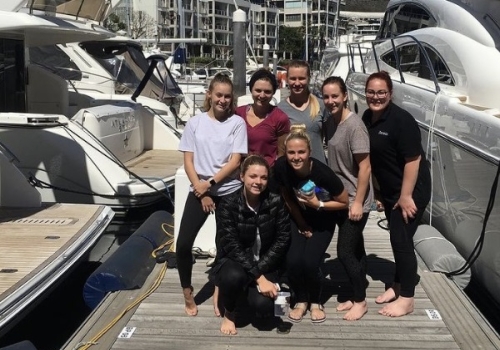
In the second part of our interview with Isobel Odendaal, the owner and director of Super Yachting South Africa talks us through her top tips for both green and established stews and stewardesses, from things not to say to your captain to everything she wishes she had known before joining the superyacht industry.
Read part one of our interview here .
Your Facebook group Yacht Stewardess and Steward Tips currently stands at 14.5k members – what do you think is the secret to your success?
I think the key is to allow education and ideas without aggression or nastiness, and to create a supportive, welcoming environment where members can ask any questions without receiving judgment or retribution. We get so bombarded everywhere with unsolicited advertising, trolls and information, but I have always believed that you as a member have chosen to join our group, and it is our job as admins to provide a safe and enjoyable environment for each member without all the added ‘noise’ from advertising and judgmental Facebook warriors.
The Yacht Stewardess and Steward Tips group has just consistently grown since 2013, and I believe this is through monitoring it numerous times each day and only allowing content we deem of interest to the members and that they will not find on any of the other hundreds of yachting groups – it is hard work because trolls do pop up anywhere, but I think the success is also thanks to the members – we all provide a safe, nurturing culture of sharing, advice, tips, support, ideas and even humour – with the common goal to grow, educate ourselves and improve our service to our guests.
My initial intention of developing the group was to stop the secrecy that existed in the industry – like chief stews leaving the yacht without leaving handover notes, or not wanting to share your secrets and tips with anyone (what exactly does one benefit from this??) – and I believe Yacht Stewardess and Steward Tips has created an awareness of the common goal of growing and sharing information in yachting, especially in the interior department. So many other stew tips groups, blogs and Instagram accounts have been developed since I launched this group and it is wonderful to see how people are no longer trying to hog information, but rather share it with other individuals.

Do you face any particular challenges when running such a big group?
The biggest challenge would be to find the time to answer each question in detail – often other members answer questions in a timely, helpful, informative, encouraging and positive manner, which is wonderful, but I would often like to add some valuable information or advice. However doing so would probably be a full-time job, something I simply don’t always have time for!
We are also very focused on not allowing posts that can become too political, such as: “I don’t get along with my cabin mate,” etc. This can quickly escalate to arguments and disagreements, which is something we try to avoid at all costs.
It is also a challenge to sometimes keep some information ONLY for my school’s students, as there has to be a balance between providing useful advice and tips on a large forum, and in the end not discouraging new students to join our steward/ess training programme – we still need to entice them to join us for training!
What are some of the most commonly asked questions on the group?
Shoes shoes shoes and more shoes. I feel everyone’s pain – I know what 15 to 18 hours feel like on bad shoes! I have, in one of my articles for www.onboardonline.com, specifically covered foot treatments and relaxation whilst on charter because I know this is a common problem all steward/esses deal with on a regular basis. The other most common discussion is laundry issues and stain treatment, and my biggest challenge is educating members that you cannot simply use any treatment on any fabric, different fabrics have different stain treatment solutions. Our discussions are so diverse, it is difficult to pin it down – they vary from pregnancy whilst still on board as a stewardess, games for crew while on crossings, advice on different culture guests on board and charter itineraries to writing stew training manuals , how to care for flowers , compiling checklists, fitting out a new build, using lemon, baking soda and hydrogen peroxide instead of harsh chemicals, how to make a variety of cocktails and input from a mixologist, table setting ideas - the list goes on!
What’s the best piece of advice you have ever been given?
What not to ever say to a captain:
- “That’s not the way we did it on my old boat.”
- “When do we get a day off?”
- “I’ll do it later…”
- “But I just washed the boat…”
- “That’s not my job.”
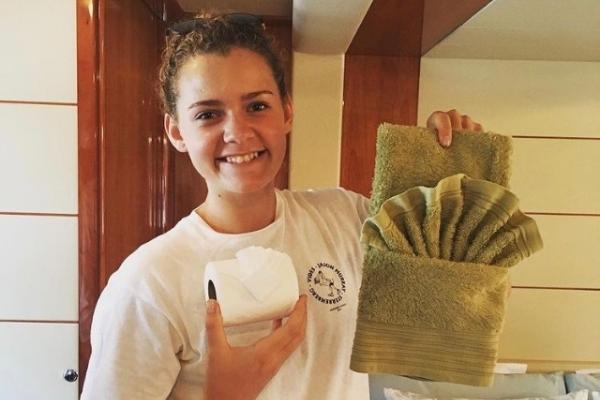
- Anticipate guest needs.
- Learn how to keep your mouth shut with a smile on your face – through long hours – and keep a happy, positive attitude.
- Be flexible.
- Have an open mind and a willingness to learn, listen and help where needed.
- Attention to detail – the devil is in the details.
- Common sense is not so common anymore…
- Be compatible and tolerant with multi-cultures and multi-personality types.
- There are clear boundaries between guests and crew.
- Learn grace under pressure.
- Punctuality – how to set an alarm!!!
- It is ok, no essential, to ask questions when uncertain.
- Learn personal self-drive, initiative and anticipation.
- Don’t treat the yacht as your own!
- Learn the art of multi-tasking.
- Just to get on with the job – the “No, but…” answer gets annoying.
- No drinking with the guests.
- Self control – don’t party a lot while not taking your job seriously.
- Don’t get emotionally involved with anyone on board, neither guest, the captain, or the crew.
- Keep to your job/keep your head down/stay focused on the job/mind your own business/stay out of the drama and politics.
- Stay professional at all times.
- Be polite and courteous to your fellow crew members, and respectful of your superiors, as your reputation will follow you.
- Be prepared to work extremely hard around the clock/pull your weight.
- Don’t talk badly about people/gossip.
- Listen and learn – save your suggestions until have earned a right and respect to give your input.
- Take time out to smell the roses , take time in port and have fun.
- Develop a thick skin and don’t take things personally.
- Respect the chain of command.
- There is no such thing as complete privacy while working on boats.
- Know your place and don’t get too friendly – you are not a friend of the owner, you are an employee.
- Take pride in what you do.

- Talk to the person you’re having a problem with. Solve it like an adult, and don’t take it to the captain, or worse, the owner.
- Remember it is a small industry and what happened in Antigua, they will know in Antibes the next day.
- Stay positive.
- Work hard, play hard, be careful.
- Don’t chase the money - it is a hard job, so you must really want some aspect of the job. Just doing it for the money will never be satisfying.
- Always persevere.
- Be attentive to safety in ALL aspects of your job.
- Be careful what you say, and to whom you say it.
- Be honest.
- Be organized.
- Choose a great crew over higher pay.
- Clean up after yourself.
- Stretch or exercise every day .
- Don’t eat every time you see something delicious.
- Don’t get star struck over celebrities – everyone that comes on board is a VIP and should be treated as such.
- Don’t take shortcuts to gain success.
- Look out for yourself and your friends.
- Never let a hangover impede your job performance.
- Put away your cell phone during work hours.
- Say goodbye to your old life and hello to your new one.
- Sleep on break times when guests are on board, you need it! You can walk around port another time.
- Stay in touch with friends and family outside the crew – keeps you out of drama and maintains sanity.
Things I wish someone told me before joining the industry:
- Always read garment labels before laundering. DO NOT tumble dry if the label says so, and DRY CLEAN only means exactly that.
- Bleach can cause serious damage and should rather not be used. It ruins clothes, and eats marble, wood and the gold on plated fixtures .
- Check the laundry for objects inside pockets (like pens, lipstick, Chapstick, mobile phones and lighters).
- Don’t mix colours and whites – EVER!
- Don’t put bottles of wine or Champagne in the freezer for a quick chill – as you might forget about it and there will be a big mess to clean up.

- Agents/chandlers can take care of a lot of things.
- Always spray cleaning products on the cloth first, not the surface that you are cleaning.
- Blue coloured cleaner should not be used (in the laundry).
- Check the voltage of an appliance before plugging in (USA 110V and EUR 220 – 240 V).
- Bleach on a white carpet can make it PINK!
- Collect business cards – contacts are everything in this industry. Keep them sorted into different countries and different sections: florists, transports, provisioners, etc.
- Communicate every detail that you know – share your info as someone else may need to know.
- Don’t allow acidic foods or lemon juice, etc. to touch marble, the acid will etch it.
- Don’t leave soap (like liquid hand wash soap and soap bars) on marble, it will damage the marble.
- Don’t open the door (even after knocking) unless someone has invited you in.
- Don’t overload the washing machine (especially with big heavy towels) – it will break or leak.
- Don’t use Museum Gel or Magic Erasers in the interior – EVER!
- Carrying cleaning products in a caddy prevents drips (from bleach and blue Windex, etc.) on your white carpets!
- Don’t use heavy duty steel wool to take hard water marks off mirrors – it will scratch.
- Don’t use razor blades on plastic mirrors.
- Don’t use Scotch Pads on INOX galley surface.
- Don’t use Scotch Pads on Lexan Shower doors to clean off soap scum.
- Don’t use vinegar and water on marble, granite or onyx surfaces – it will damage the surface.
- Educate, then delegate.
- Put the “runners” back on the carpets as soon as the guests leave.
- Put drop towels or protective covers down at entrances throughout the boat that are used by crew – their feet are often wet when they come from outside or some don’t even take off their shoes.
- If you make a mistake, own up immediately, as someone may know a quick solution.
- Just use water and vinegar on wood surfaces, not Pledge or Mr Min, as all those other products attracts dust.
- Keep track of your $$$$$!
- Milk gets rid of ink marks on leather (don’t ever RUB HARD to try and remove a stain off a leather couch).
- NEVER leave an iron unattended!!!!!
- Scented sprays stain silk, brass and marble (does it make sense to spray an oily scented spray over clean surfaces that you just detailed?).
- Set the glasses for the table while at anchor at the last minute, bad wake can topple them.
- Stain removers on carpets can make the carpet attract more dirt.
- Make sure you always securely stow items inside cupboards (like vases, candle holders, wine). If not, they will roll around when the boat moves and break.
- Trust your instincts when interviewing for a job – if the captain seems disrespectful in the interview, he probably is always like that.
- Varnish work on interior is softer than exterior varnish, it nicks very easily.
- When ironing in a cabin, make sure to put down a towel or protective cover underneath, so if/when the iron falls over, you don’t ruin the carpet.
- Whink rust remover stains stainless steel.
- Always have everything ready – silver polished, napkins folded, etc. Plans are guaranteed to change!
- Fold napkins and sheets while ironing to save time later.
- Febreze/Downy Wrinkle Release spray for sheets on bed or tablecloth on table to “hand iron”.
- Set up breakfast items the night before (do not actually set table, but fill jam pots, pull cutlery, table cloth, etc.)
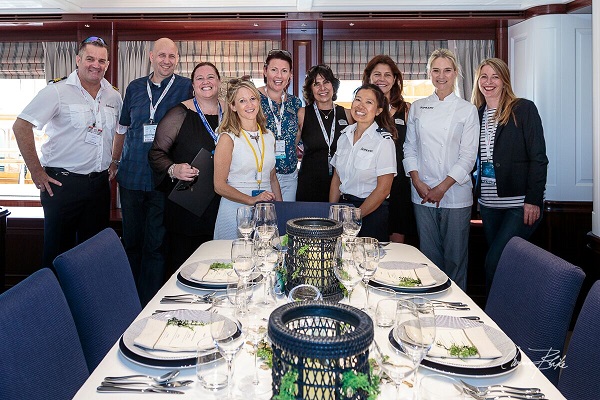
- Always carry something with you when you walk from one part of the boat to another, to save on trips.
- Always double check your work – leave and come back to see if you missed anything.
- Add Ginger Ale, or a capful bleach, or a teaspoon sugar, or a copper penny to the water in your flower arrangements to make them last longer.
- Be systematic – always do things in the same order, so you get in the “groove”.
- GooGone is a wonder product.
- Let your candles cool down on the table after use, this way you can carry them without making a mess from runny candle wax.
- DRIFT method – Do Right First Time – saves time not having to re-do it later.
- Flour sack cloths are the best cloths on earth.
- Dry stainless immediately to avoid water marks.
- Heat water to boiling temp in the microwave to loosen dried food.
- Keep cleaning supplies in a caddy/carrier so that you know when it is running out (instead of checking lots of storage places).
- Keep fridges stocked.
- Keep folded and ironed napkins on pants hangers after ironing them. This will avoid folding creases.
- Make lists – always have a pen and paper in your pocket.
- Place orders (flowers, etc.) on the phone while ironing.
- Put oranges in microwave for 30 seconds – this gives more juice when squeezing.
- Soak white napkins and white table cloths or white sheets and pillow cases in bucket of Napisan immediately after use – this keeps stains from setting.
- Squeegee showers or wipe with Chamois before cleaning to get rid of excess water (do not use guest towels for this!!).
- If you are out of time, use iron-on double sided tape or for a quick fix instead of sewing a hem.
- Vacuum walls, shelves, etc. with a brush fixture on the vacuum before dusting.
Oh, and life in real yachting IS NOTHING LIKE BELOW DECK !

Stewardess Tips & Tricks
Being a stew on a Superyacht is no easy task, and it’s certainly not as glamorous as many think. Any of you out there doing the job, or who have done it in the past, will know that it’s the most relentless and exhausting job, particularly whilst on a charter when days are long and opportunities to even go out on deck can be few and far between.
Stews also have to be massively creative, not only with the ‘fun’ parts of the job such as table decorations and flower displays but with how to keep the boat and the guests’ belongings looking top-notch. Stains on fragile fabrics, finding the best way to clean a huge range of surfaces and how to make the flowers last as long as the charter, are all examples of things that stews are constantly juggling during their unbelievably busy day.
With that in mind, we have put together a collection of tips, tricks and hacks to help you find solutions to problems, and maybe be a little inspired to try different things too. All interior crew have their book of tricks, but you might just discover a couple you didn’t know.
Carpets/Fabrics:
Naturally, your best line of defence against damage to these is protection. Always have carpets and any furniture fabrics treated with an appropriate stain repellent/waterproofing treatment to minimise potential damage. However, accidents still happen so here’s a couple of tips…
- Never scrub or put any stain remover on spilt red wine. Blot as much as possible with a WHITE paper towel (no dyes), then add some club soda – or cold water – to dilute the stain. Keep stain wet and keep blotting, never scrub. When the paper is coming up clean, lay a stack of kitchen towel over the area and pile heavy books on top. The weight will push the towel down so that liquid sitting deeper in the pile will be absorbed. Check and change paper often until the stain is gone.
- Suede is a beautiful fabric but requires regular care to keep it looking amazing. Start by gently vacuuming with the upholstery attachment, or brush by hand to remove loose dirt. Then, brush the nap to restore the surface texture. Rub-down the suede with a proper suede cleaning cloth to keep it looking its best.
- For liquid stains on suede, the most important thing to do is act quickly! First, wipe the stain with a suede cloth, then dip a towelling rag into white vinegar and wipe the stain to remove as much as possible. Wipe inwards towards the middle of the stain to prevent it from spreading further.
- For greasy stains on suede, use some white spirit on a white paper towel and wipe. Then, dust the stain with some bicarb and leave it to dry well. Once totally dry, lightly brush or hoover the stain with the upholstery attachment.
General Cleaning/Maintenance:
All stews have certain ways of doing things, and products they like to use, but here are some useful tips and suggestions…
- Getting all marks off glass and mirrors can be a nightmare. Try turning off all the lights and shutting all the doors, and using a torch or your phone to check for any you’ve missed.
- Be organised – have everything you need with you prior to starting cleaning, as lots of trips waste precious time. Try having a list of all products and items you need in your caddy that you can check off before you go.
- Have a set routine of cleaning that you stick to every time. That way, you will do it automatically, and be sure that you’ve cleaned everything. Also, when you’re totally exhausted mid-season, you can pretty much do it without thinking!
- Use environmentally friendly/natural products and brands wherever possible. Essential oils are a must-have part of your cleaning kit. DoTerra make the highest quality oils, that are actually food grade, so you can use them in your cleaning, and in the galley! Oils like lemon, lavender, orange, citronella, lemongrass and tea tree will be incredibly useful. Mix lemon oil with vinegar to make a fantastic all-purpose cleaner without the chemicals.
- Mix 50/50 table salt with household white vinegar and soak any stained china dishes for 5 minutes prior to washing. Or, you can rinse the stained china with vinegar, and then gently rub stains with a paste of baking soda and water before the final rinse.
- When you’re washing glass and crystal, only use a minimal amount of detergent to avoid streaks. You can also add a drop or two of white vinegar to the rinsing water for extra sparkle.
- Silverware can be fragile, particularly when exposed to salty sea air. Tarnishing is caused by the silver reacting to oxygen, so keeping it stored in an anti-tarnish cutlery roll is the best way to store it. Also, do not use any detergent with citrus additives, and rinse it immediately when dirty to reduce staining.
- For great porcelain and china storage, you don’t have to fork out for expensive dividers, using flannels, coffee filters or napkins work just as well.
- Hairline cracks in china dinnerware can often be repaired by being submerged in milk and left to simmer for an hour. Milk contains casein, a protein that forms a natural plastic-type glue that will fill cracks when heated.
- Screw up a ball of aluminium foil and put it into the dryer to eliminate static cling.
- Always order a good amount of spares for crockery as the design may go out of production.
- Lavender or citronella essential oils make for great, natural fly and wasp repellents.
Decorations
- To keep cut flowers fresh, mist every day and put ice cubes in their water before putting them out.
- Wherever possible, store flower arrangements in an air-conditioned room overnight. It revives and refreshes them.
- Always cut stems at an angle, and re-do this every few days to refresh the blooms. Ideally, do this with a really sharp knife instead of scissors for the cleanest cut that minimises damage to the stems.
- Feed floral displays with the dregs of guests’ sugary drinks, or make a sugar-water solution.
- Flowers start rotting in the vase due to bacteria, so put a little Listerine or vodka in the water and they will last a lot longer!
- Keep any flowers away from fruit, as fruit emits gasses that will prematurely wilt flowers.
- Change water every two days and follow the above steps for flowers that last ages.
- Use flowers from displays that are on their way out as part of your next table centrepiece. Or, you can dry the petals, add essential oils and put into pretty little bags as drawer scenters.
- Use your surroundings/location to inspire your table décor. Local flowers, plants, herbs, shells, sand etc., can all make lovely focal points on your table. Add some candles, lights or ornaments, and you can impress your guests and give them a sense of where they are.
- Don’t be afraid to source interior decoration items from budget shops such as IKEA or Zara Home. You can easily dress things up to look amazing, and save some of your budget. However, don’t be tempted to buy things you’d only use as a one-off. Try to buy things you could see in a few different decorative settings to maximize use, and not take up all the boat’s storage!
- A good stew will always have a fantastic welcome drink for guests up her sleeve. Something refreshing, pretty and non-alcoholic to perk up travel-weary guests as they come onboard.
Hopefully, you’ve found some useful tips in this article, and will help make sure your season runs more smoothly!
We’re here to help
Elan House, 5a Little Park Farm Road, Fareham, Hampshire PO15 5SJ

Keep up to date with Smart Move
How to Become a Yacht Stewardess: Everything You Need to Know About the Job
Posted on: 11/26/2018

The annual salary for a yacht stewardess starts at around $40,000 plus tips. While that may not seem like a lot to some, while you are living on the ship all of your expenses will be covered by the charter guest.
Being a yacht stewardess is a great way to see the world, meet incredible people, be fed every meal by a great chef, and live a more present lifestyle free of cell phones and constant connection. Away from your family and friends on the open water, you will find peace and adventure.
Read on to learn how to become a yacht stewardess and begin your dream career today.

How to Become a Yacht Stewardess: The Education Requirements
If you want to land a job as a stewardess, you will need to take some short courses that ensure safety and good service on the yacht.
If you are looking for an entry-level position, then you will take the most standard courses, while those looking to become a chief stewardess will have to go back to school for further certifications.
When you are first getting started in the yachting industry, you will need to complete an STCW certification course at an academy like the Maritime Professional Training Academy in Fort Lauderdale.
This course costs around a thousand dollars and is typically completed over about a week-long time range.
How Hard is it to Get Hired as a Stewardess?
Getting hired as a stewardess aboard a yacht is generally not considered to be difficult. Once you have your STCW certification, you will be legally qualified to take a position.
In order to get a job, you should move to a major port city. In the United States, nine times out of ten that is going to mean Fort Lauderdale. Your other option is Newport in Rhode Island. While there are other cities in the country where you may be able to find a position, these hotspots are the best place for those new to the industry to scoop up work.
Once you land in the city, you can hit the docks with your resume looking for people who need to fill positions. In this industry, when you need someone, you need them now, so be prepared to start as soon as the next day.
If you have any hospitality experience such as bartending or entertaining guests, this is helpful to list on your resume.
What Time of Year Do They Hire in Fort Lauderdale?
To get hired as a stewardess, you should head to Fort Lauderdale in between seasons. This is where you will find the most stationary yachts giving you the best chance of landing a position.
There are two primary yachting seasons - summer and winter. To get hired for the summer season, you will need to be in Fort Lauderdale between April and June. For the winter season, you should arrive between September and mid-December.
These down-times are when yachts are in port preparing for the next season and you will be able to set up interviews with many different ship captains or owners at one time.
Those are also the months that you would have off once you become part of a crew while the yachts are repaired and maintained for the next season.

What Do I Do if I Don't Get Hired There?
When you are new to the yachting industry (the term is "green"), you may find it difficult to secure a position. When you begin asking around for advice, many experienced crew members will tell you to head to St. Martin to look for work.
St. Martin is where many of the yachts head and make a port out of for the season. If you are there you can often find positions that crop up from other stewardesses who didn't work out or were unable to fulfill their obligation.
In order to do this, you will need to purchase a round-trip ticket in order to get through customs. You can cancel your returning flight at a later date if you find a position.
If you choose this route, be cautious when you talk to customs people at the airport. Don't tell them that you are coming to look for work. It can raise a lot of questions and prevent your entry in some cases. Just like how people coming to America aren't able to work, there are similar visa requirements for the island.
However, since you will be hired aboard an international vessel, those laws won't apply to you. But trying to explain all of that to an ornery customs agent isn't the best way to spend your first twelve hours in the city.

Consider Registering with a Crew Agency
One of the best ways to find open positions aboard yachts is by registering with a crew agency. They will be able to pair you up with openings and act as an advocate on your behalf.
Before you hit the agency, make sure you spruce up your resume. You need to sell your abilities and talents to potential captains.
These agencies typically don't require any fee from you to join, so you might as well give it a shot. The agencies are paid by the ship captains once they agree to your placement.
If you go with an agency, you will still need to attend individual interviews and secure the position in the same way you would if you found it on your own. It's just a great way to aggregate leads and provides a lot of exposure for your resume bringing you more potential opportunities.
To stay on an agencies books, you will need to check in with them weekly while you are in between gigs. This is so that they can ensure that you are still available. Once you find placement, you will be required to check out.
Make sure you follow through with doing this or you may find it difficult to work with the same agent when you are in need of work again.
Networking Tips
Once you move to town, you will need to begin by walking the docks and meeting people. Dress professionally and make friends, this is a social industry where the right recommendation can go a long way.
Be proactive and positive while you network. You need to be confident in yourself and your ability to find a job if you want anyone else to believe in you.
Useful Skills to Have
While anyone can find a home aboard a yacht with the right attitude and certifications, there are certain skills that will move you up the hiring list.
Those that have basic cooking skills, experience babysitting, formal service training, experience working in a bar or food service, mechanical experience, carpentry skills, and diving experience will all find it much easier to find work and they can also help you command more pay.
How to Secure the Most Pay
When you are first starting out as a crew member, your salary is usually a baseline. Over time, as you gain experience, you will be able to command a higher salary.
Other factors that impact your wage include the size of the boat, the number of responsibilities that you will have, whether the vessel is chartered or for private use, and your ability to make a commitment to being on board long term.
Jobs that offer other benefits like medical and vacation time may offer lower pay as a trade-off, so decide what is important to you before you decide what vessels to head to look for work.

A Note on Commitment
When you step aboard a yacht as a crew member for the first time, you will be very excited and eager to get started. But over time with subsequent charters, you may begin to lose your excitement, especially if your charter guests are particularly difficult or if you get into an argument with another crew member.
While cruising around the world is a dream come true for many, you have to remember that it isn't a vacation. You will be expected to work hospitality hours, which are long and hard and often go late into the night.
You will also have to contend with the personalities of the other crew members and try not to step on anyone's toes, both while you're staying in Fort Lauderdale and on your ship. If you don't have an easy-going personality type, then this may not be the position for you.
Once you take a job on a yacht, you need to make sure that you finish out your contract if you want to find employment anywhere else. Don't allow gossip, bad etiquette and drama to ruin your potential career.
Where to Stay While Finding a Position
Having learned how to become a yacht stewardess, you know your next step needs to be certification and moving to Fort Lauderdale to find a position.
Check out these great listings for a safe, affordable place to stay .

All guides , Stewardess
Service yacht stewardess – 9 tips.
- August 5, 2021
Yacht Stewardess – Setting the Table
9 tips from a chief stewardess.
To get a Yacht job you need first to know the basics of setting the table, discuss with the chef what will be served, know how much time the chef needs to prepare each dish. This way the guests are left waiting around. Be confident in what you are serving as you will need to prepare the correct utensils for the dish and inform the guests what is on their plate. Allergies must be addressed before any food is prepared.
Once you have taken our training you can confidently apply for junior yacht stewardess positions here.
The 9 Steps
- Wipe the table, chairs and make sure no crumbs are left under the table from previous seatings
- Place the ironed tablecloth over the table. The cloth must be spread out equally across the entire If you are setting the table outside, you might need to secure the corners of the cloth with clips. The wind can pick up and you want your table to stay in one piece
- Set placemats down for each guest. Place inline with the chairs and they must be symmetrical with the opposite Make sure there is enough space between each person sitting at the table
- Plates are placed one inch away from the edge of the table.
6. Set the table – Remember they work from the outside in. Starter cutlery on the outer and mains closest to the plate. If the guests are having desert, the cutlery will be plated at the top of the plate or simply placed on the table once the mains are cleared.
7. The bread plate lives to the left of the The bread knife balances on the right side on the plate7.
8. Water glasses will sit closest to the top right hand side of the plate. Followed by red wine glass or white wine glass easing closer towards the guests. If coffee is served, place hand- react away to the guest on the right.
9. Napkins will be placed beside the forks or on top of the plate depending on the type of service and whether the food is plate.
10. Lastly salt and pepper , balsamic and olive oil or anything the guest may need for their starters will be placed throughout the centre of the table
Service Yacht Stewardess
Make sure in between meals you clear everything the guest no longer need. Don’t serve the next dish with dirty plates/culture still present on the table.
Keep an eye on the guests’ drinks. Ensure they are happy with each meal and question whether they need anything else before leaving them to eat their meal.
Suggest after the desert is served whether the guests would like any tea or coffee. Place a bowl of chocolates on the table for after.
You can get the Stewardess Package to become a professional Stewardess here

Yacht Deckhand Premium STCW

Yacht Stewardess Premium STCW

Yacht Stewardess Full STCW

Superyacht Deckhand Full STCW

Top 10 best places to find a Yacht job in the Med 2024?

Do I need a visa to work on Superyachts ?

Dockwalking Yacht Crew guide

Yacht Crew Salary 2024

Yacht Stewardess Salary 2024

Yacht Deckhand Salary 2024
Best superyacht training in germany – yacht crew, superyacht crew training europe.

Final 8 Training Spots remaining for Med-season 2024.Use free code “yachtie50” for 50€ free.
Get free yacht cv and yacht job offers
Work On A Yacht
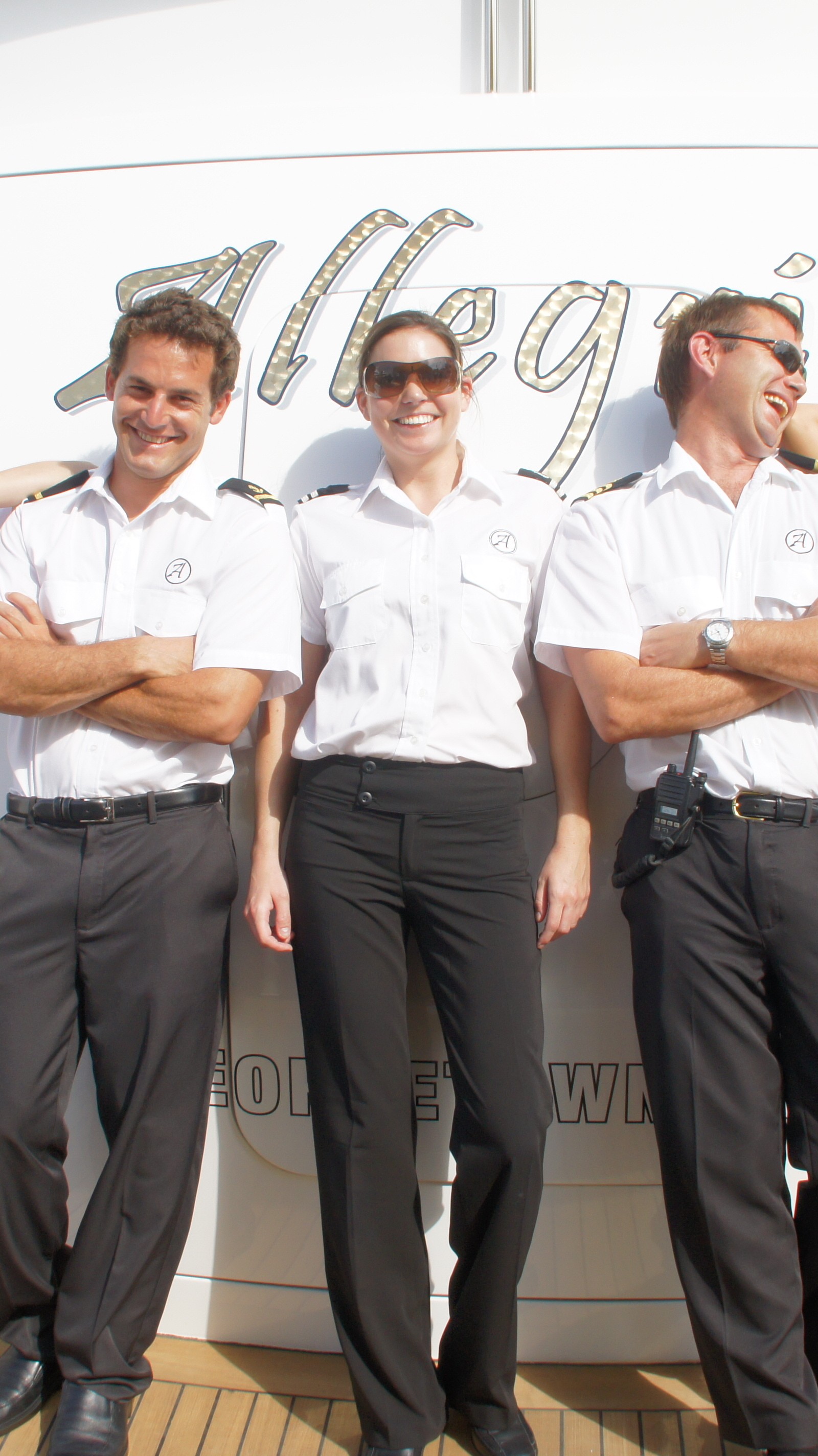
From the Blog Subscribe Now
Official Yacht Stewardess Job Descriptions and Salaries (Including a Salary Chart)
June 12, 2018 By Julie Perry
For some even more straight-from-the-book fun, I present to you below the official job descriptions for the various yacht steward/ess roles. These are pulled directly from The Insiders’ Guide to Becoming a Yacht Stewardess Chapter 3—a chapter that actually contains descriptions for each of the positions onboard, from Captain to Engineer, and from Executive Chef to Deckhand. And they are all presented with accompanying salary ranges.

The Crew of Megayacht “Allegria” (2010). Photo by Suki Finnerty of YachtingToday.TV
So if you’re interested in a yachting career in another department outside of a superyacht’s interior, consider picking up a copy of my book to learn more . (The “how to get started” information in Part II of the book really does pertain to most any entry-level position.)
Official Yacht Steward/ess Job Descriptions
Meanwhile, here are your yacht stewardess job descriptions, with a detailed salary chart found at the end of this post:
CHIEF STEWAR/DESS (Annual Salary Range: $39,000–$96,000+)
Job Function —The chief stewardess will carry out his or her duties and responsibilities under the direction and authority of the captain. As the person ultimately responsible for the interior of the vessel and for providing superior hospitality service to meet the owner’s and guests’ expectations, the chief stew will also train and manage any lower-ranking stews under his or her supervision. Excellent service, host/ess, and managerial skills are a necessity, as is having a good degree of creative flair.
Responsibilities
- Responsible for the everyday smooth operation of the boat’s interior department, which means being adept in the arts of housekeeping services, laundry procedures and wardrobe management, food and beverage service and cleanup, and entertaining (while maintaining proper etiquette and a high-energy, can-do attitude at all times)
- Responsible for directing, motivating, and training the lower-ranked stews (2nd, 3rd, and so on)—if any are onboard—which includes the assignment and scheduling of rotational duties and implementing Human Resources (HR) procedures and guidelines
- Providing valet services and overall guest care. Note: In the hospitality industry, “valet” refers to any employee who performs personal services for guests (and refers to more than just parking cars, which is what we normally associate it with). With regard to yacht stews, valet services include tasks such as packing and unpacking guests’ luggage, caring for their personal items and specialty garments, and even making daily activity arrangements for them.
- Protecting, maintaining, and caring for valuable interior items and surfaces, such as artwork, silks, china, crystal, linens, fine woodwork, and marbles
- Creating, implementing, and monitoring a financial planning system that includes accounting and budgeting for interior department needs
- Creating, implementing, and maintaining an informational management system of interior inventories and maintenance procedures
- Provisioning to maintain inventory supplies and cover guest usage
- Collaborating with the executive chef regarding meal service for the guests
- Creative planning and quality service of theme dinners and occasional guest parties
- Keeping all interior storage areas organized, orderly, and maintained
- Crew uniform purchasing
- Writing and updating all interior manuals and guest-information documents
- Maintaining and displaying knowledge of international etiquette and protocol
- Watchkeeping in accordance with the list of responsibilities in the crew mess
- Exterior-crew support as needed (requiring proficiency with exterior lines and fenders)
- Selecting, purchasing, and serving fine wines, specialty teas, and cigars, which may require advanced training
- Planning and managing destination experiences proficiently
- Assuming full responsibility for certain onboard safety tasks (as assigned by the first mate) in an emergency
Qualifications —A chief stewardess should possess some type of training and experience in the areas of bartending, silver service, cigar service, and wine presentation and service. (The more extensive a stew’s wine knowledge, the better.) STCW BST certification is now mandatory for a chief-stew position, and previous yachting experience on either charter or private vessels is most always required. It is also recommended that you obtain an ENG1 Seafarer Medical Certificate, or its equivalent. Floral arranging and table decorating skills prove to be an advantage, while an Advanced/Medical First Aid Certificate or a higher degree of medical training is also a major bonus. In fact, many chief stews are now taking courses to become certified as a yacht’s Medical Person-in-Charge. This requires a seven-day course that will satisfy the standards set forth by the STCW Code A-VI/4, 4.4-4.6, offered at many of the marine training schools. While the new PYA Interior-Crew G.U.E.S.T certification is not mandatory (as of July 2013), it is wise to follow the courses outlined and seek out equivalent intermediate and/or advanced interior-crew training classes, if not sign up for the full PYA G.U.E.S.T course modules.
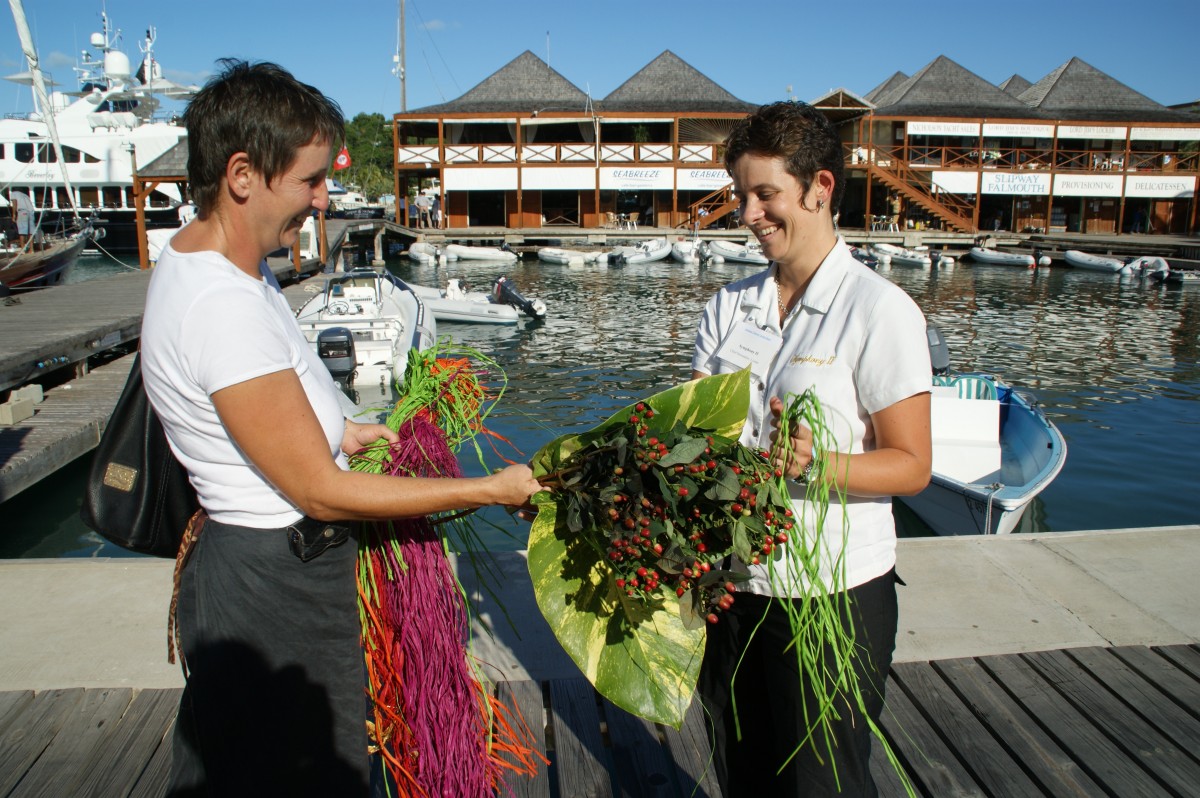
A Chief Superyacht Stewardess handles the ordering of provisions and other guest amenities for the yacht, which might include things like floral displays that the interior crew is too overwhelmed to handle on its own. While that may sound like an easy task, consider that no matter how many years a yacht stew has been doing this job, he or she will always end up in a new port (sometimes half-way around the world). First, he or she must find a reputable vendor. And not only do fresh flower arrangements need to be ordered, but they must be paid for as well. A chief stew must keep thorough accounting throughout a trip and make sure all vendors and provisioners are paid from the right accounts. Photo Credit: Suki Finnerty of YachtingToday.TV.
STEWARDESS—2nd and 3rd Stews; sometimes referred to as Senior and Junior Stews (Annual Salary Range: $30,000–$54,000+)
Job Function —A 2nd or 3rd stew will carry out his or her duties and responsibilities under the direction and authority of the chief stew and the captain. Individuals holding these positions are responsible for assisting with the maintenance of the interior of the vessel and providing superior hospitable service, in line with the owner’s and guest’s expectations. Hostess skills should be well developed to fully accommodate the owners and their guests while onboard.
- Maintaining interior housekeeping during a trip (detail cleaning) while also being held largely responsible for guest-cabin care
- Laundry, ironing, and other wardrobe maintenance tasks for guests and sometimes crew (when guests are onboard)
- Applying excellent guest service (including silver service) and expert bartending skills when called upon
- Guest care and valet services
- Assisting in the creative planning and quality service of theme dinners
- Assisting with physical product inventories, provisioning, writing and updating checklists, and all other applicable tasks within interior
- Exterior-crew support as needed
Qualifications —This is an entry-level position; while previous yachting experience is not required, it does bring added salary benefits. STCW BST certification is now mandatory for obtaining even entry-level work on a megayacht. It is also recommended that you obtain an ENG1 Seafarer Medical Certificate, or its equivalent. Table service, bartending, and cocktail-service experience or equivalent qualification are crucial to landing a job—training and certification recommendations for these can be found in Chapter 7 of The Insiders’ Guide to Becoming a Yacht Stewardess. While the new PYA Interior-Crew G.U.E.S.T certification is not mandatory (as of July 2013), it is wise to follow the courses outlined and seek out equivalent introductory interior-crew training classes, if not sign up for the full PYA G.U.E.S.T introduction modules.

Yacht Stewardesses at Work Photo Credit: Suki Finnerty of YachtingToday.TV
Dual Positions
On smaller and midsize vessels, where not as many crewmembers are needed (nor is there room for them), the core crew positions listed in the last section are often fused into what I call “dual positions.” An individual hired into such a position will assume a dual role and be expected to wear more than one “hat” during the course of a day.
Here are some examples:
- Deckhand-Stew
- 2nd Engineer-Deckhand
- Captain-Engineer
- Stew-Purser
Steward/ess Salaries
According to Dockwalk’s annual Crew Salary Survey in September 2013 , steward/esses are making a wide variety of salaries these days, and the amount of experience and training they have makes a difference. Of course, the size of the yachts will also be a factor. Compensation for chief stews runs anywhere from $3,450 to $5,650 a month on smaller yachts (80 to 140 feet) to $5,200 to $8,000 a month on yachts over 140 feet. It is very common now to see $65K and $70K salaries, or even $90K+ on the much larger vessels. Salaries for entry-level yacht stewardesses start out between $30K–$43K a year, or $2,500–$3,600 a month.
Base salaries for stewardesses, when compared with those of food and beverage servers, cabin stews, and laundry staff on cruise ships, are slightly higher. But where the potential income differences become dramatic is when you consider the tips one can earn working on luxury charter yachts, or the bonuses and perks afforded the crew on solely private yachts.
Here is a table that sums up salary ranges for the various stew roles within the interior department on a megayacht / superyacht:
Steward/ess Salary Ranges
While annual salary guidelines are given above, again, keep in mind that the ranges are wide because salaries will depend on a variety of factors, including the size of the yacht, the use of the yacht (private or charter), the style of boat (power or sail), and what other benefits are available to the crew, such as insurance packages or education reimbursement. Salaries may also vary depending on the specific qualifications of a crewmember, the amount of time the owner and guests use the vessel, and what itinerary will be traveled. Furthermore (and I cannot emphasize this enough), the compensation ranges listed are base salaries and do not reflect tips, if those are applicable.
Yacht Crew Have Got 99 Problems, But Living Expenses Ain’t One of Them
The first thing people always say after I give them the above salary figures: “Gee, is that all? I thought you said it paid well?” And someone will always add, “Oh, well I can get paid that same amount to take an entry-level office job.”
But here’s the kicker: no expenses.
Most all positions on luxury yachts require you to live aboard and travel with the vessel, and therefore, your room and board are completely covered. It is customary and expected that everything you need on a daily basis is provided by the yacht owner—your meals, your uniforms, laundry detergent, linens, and on most boats, even your personal hygiene products, such as soap and toothpaste. Meanwhile, your earnings automatically go into your bank account.
What other job can you take where, at the end of the year, you have nearly your entire salary sitting in your bank account, relatively untouched? Most people in other industries are lucky if they save 1/10 of the amount they earn in a year. Why? Because they are paying rent and utilities, buying and maintaining cars, and purchasing all the clothes they wear to work each day. And let’s not forget groceries.
Ready to find out how to get started one your way to working on a yacht? All the advice you need to land that first yacht job can be found in this guide . Good luck!

Megayacht crewmembers. Photo Source: Suki Finnerty of YachtingToday.TV.
Interested in more advice on how to become a yacht stewardess and what it takes to handle the job? Download Chapter 1 of The Insiders’ Guide to Becoming a Yacht Stewardess 2nd Edition here .

September 11, 2013 at 6:01 pm
This is something I really would like to do !! I’m going to check into getting the training !!
[…] some even more straight-from-the-book fun, click here to check out official “job descriptions” for the various yacht stewardess roles on a …, pulled directly from The Insiders’ Guide to Becoming a Yacht Stewardess’ Chapter 3. Even […]
[…] as engineers. Then you work your way up to captain, mate, chief engineer, chief steward/ess; and the salaries in those higher-level positions are outstanding, and then you have the tips, […]
[…] then travel around and see the world. Our guest today is Indy native Julie Perry. She worked as a yacht stewardess…and then wrote about it with her first book. Then she wrote a second edition that just came […]
[…] watching the full season of Below Deck, and based on my own experience as a superyacht stewardess, I feel Captain Lee made decisions that a truly professional captain would make. It is also Captain […]
About Julie Perry
Our latest tweets, get our email newsletter.
- Name * First Last
- Email This field is for validation purposes and should be left unchanged.
- PRO Courses Guides New Tech Help Pro Expert Videos About wikiHow Pro Upgrade Sign In
- EDIT Edit this Article
- EXPLORE Tech Help Pro About Us Random Article Quizzes Request a New Article Community Dashboard This Or That Game Popular Categories Arts and Entertainment Artwork Books Movies Computers and Electronics Computers Phone Skills Technology Hacks Health Men's Health Mental Health Women's Health Relationships Dating Love Relationship Issues Hobbies and Crafts Crafts Drawing Games Education & Communication Communication Skills Personal Development Studying Personal Care and Style Fashion Hair Care Personal Hygiene Youth Personal Care School Stuff Dating All Categories Arts and Entertainment Finance and Business Home and Garden Relationship Quizzes Cars & Other Vehicles Food and Entertaining Personal Care and Style Sports and Fitness Computers and Electronics Health Pets and Animals Travel Education & Communication Hobbies and Crafts Philosophy and Religion Work World Family Life Holidays and Traditions Relationships Youth
- Browse Articles
- Learn Something New
- Quizzes Hot
- This Or That Game New
- Train Your Brain
- Explore More
- Support wikiHow
- About wikiHow
- Log in / Sign up
- Cars & Other Vehicles
Everything You Need to Know About Becoming a Yacht Stewardess
Last Updated: January 9, 2024 Fact Checked
This article was co-authored by wikiHow staff writer, Finn Kobler . Finn Kobler graduated from USC in 2022 with a BFA in Writing for Screen/Television. He is a two-time California State Champion and record holder in Original Prose/Poetry, a 2018 finalist for the Los Angeles Youth Poet Laureate, and he's written micro-budget films that have been screened in over 150 theaters nationwide. Growing up, Finn spent every summer helping his family's nonprofit arts program, Showdown Stage Company, empower people through accessible media. He hopes to continue that mission with his writing at wikiHow. There are 19 references cited in this article, which can be found at the bottom of the page. This article has been fact-checked, ensuring the accuracy of any cited facts and confirming the authority of its sources. This article has been viewed 5,438 times. Learn more...
If you’re social and love to travel, yacht stewarding might be the perfect career for you! Spending months at a time exploring exotic locations, helping out on the boat, meeting and working with lifelong friends all day long. It’s a job as rewarding as it is exciting. Keep reading and we’ll teach you everything you need to know about becoming a yacht stewardess.
Yacht Stewardess Job Requirements

- SCTW certificates are valid for up to five years. After five years, you must take a fire fighting and sea survival refresher course.
- Make sure your course is certified by a national maritime organization in the country where you complete it.

- Medical conditions that may inhibit you from receiving your ENG1 include, but are not limited to: epilepsy, heart disease, kidney failure, color-blindness, and history of drug/alcohol addiction. [3] X Research source
- If you are working on a small boat operating 60 miles from shore or less, an ML5 will suffice as a substitute for an ENG1.

How to Find a Job as a Yacht Stewardess

- Living near a yacht hub between jobs can be expensive. Look into a crew house - a privately-owned, budget-friendly accommodation where yachties and former yachties live - to stay while you network, complete your training and look for work. [5] X Research source

- Make sure you look presentable while you network. Yacht stewardesses are extremely clean and well-groomed. Dress for the part you want by wearing deck shoes and an appropriate yacht shirt.

- Jobs like bartending, nannying, customer service, and cleaning all look good as these types of duties will be performed on the yacht.
- Look into doing free day work on boats to help build your sea legs and make connections with captains and crew.

- All yacht CV’s list certifications, work history, nationality, spoken languages, body modifications, references, and relevant skills. Some are even more in-depth with details like smoking habits and overall objective. [9] X Research source
- There are several free yacht CV templates online to help ensure yours fits the industry norm.
- Don’t be afraid to play around with the formatting. Your CV should be professional but also as unique as possible.

- Most interviewers are also looking for excellent presentation, leadership, and communication. Make sure to highlight these attributes when you answer their questions. [11] X Research source
You’d Make a Good Yacht Stewardess If…

Benefits of Being a Yacht Stewardess

A Day in the Life of a Yacht Stewardess

Yacht Stewardess Pay

- Yacht stewardesses also have no living expenses since food, housing, electricity, water, even toiletries are provided on the ship. [22] X Research source
- Depending on the countries you sail out of, this can sometimes be tax-free!
- Tips are usually divided evenly among the crew.
Expert Q&A
You might also like.

- ↑ https://www.ypicrew.com/yacht-work-job-qualifications
- ↑ https://uksa.org/what-is-an-eng1-medical-certificate/
- ↑ https://www.flyingfishonline.com/useful-stuff/eng-1-medical/
- ↑ https://slightnorth.com/how-to-work-on-a-yacht/
- ↑ https://www.yachting-pages.com/articles/crew-housing-and-accommodation-in-the-superyacht-industry.html
- ↑ https://yachtstewardess.co.za/how-to-become-a-superyacht-stewardess/
- ↑ https://www.indeed.com/career-advice/resumes-cover-letters/yacht-crew-cv
- ↑ https://www.ypicrew.com/yacht-interview-tips-from-recruiters
- ↑ https://stewardessbible.com/the-interview-process-selecting-the-right-stewardess/
- ↑ https://www.cnn.com/2018/08/23/sport/superyacht-stewardess-spt-intl/index.html
- ↑ https://www.pya.org/News/Crew-Accommodation-in-Large-Yachts.aspx
- ↑ https://expertvagabond.com/yacht-crew-jobs/
- ↑ https://www.flyingfishonline.com/news/is-yachting-a-good-career/
- ↑ https://www.oceaninternationaltrainingacademy.com/working-on-a-yacht?r_done=1
- ↑ https://climbtheladder.com/yacht-stewardess/
- ↑ https://nypost.com/2018/09/03/working-on-a-superyacht-is-like-being-in-a-glamorized-pressure-cooker/
- ↑ https://www.linkedin.com/pulse/what-its-like-work-yacht-crew-nicola-morgan/
- ↑ https://www.luxyachts.com/articles/three-primary-factors-combine-to-determine-the-salary-of-a-yacht-stewardess
- ↑ https://www.businessinsider.com/yacht-stewardess-florida-earns-5000-month-travel-careers-2022-4
About This Article

- Send fan mail to authors
Did this article help you?

Featured Articles

Trending Articles

Watch Articles

- Terms of Use
- Privacy Policy
- Do Not Sell or Share My Info
- Not Selling Info
wikiHow Tech Help Pro:
Develop the tech skills you need for work and life

How To Become A Yacht Stewardess & Have A Career Of Fun

Over the years I have worked in many jobs to keep my travels funded. But by far the best job has been when I worked as a stewardess on yachts. For the avid traveller, there is no better job. If you are sick of working a 9-5, you want to get paid (well) to travel the world and are ready to make incredible friendships, then read on to find out how to become a yacht stewardess .
While there are numerous benefits to this job it can also be a lot of hard work. If you’re not completely sure what yachting is, this post will explain just that and give you 10 easy to follow steps to becoming a yacht stewardess.
This job will absolutely change your life and I’m excited to help you get started. I’ve been off yachts for a couple of years now and I miss it every day. I am still trying to devise a plan to get back on them sometime soon.

Disclaimer: Some links in this article are affiliate links, which means that if you purchase through them, I receive a small commission at no extra cost to you. For more information on my disclaimer click here .
- 1.1 MAIN RESPONSIBILITIES OF A STEWARDESS
- 1.2.1 HOW MUCH DOES A YACHT STEWARDESS MAKE
- 2 2. PACK UP YOUR BELONGINGS
- 3 3. QUIT YOUR JOB
- 4 4. ARRIVE AT A YACHTING HUB
- 5.1 WHAT DOES THE STCW 95 AND PDSD INVOLVE?
- 6 6. COMPLETE YOUR ENG1
- 7.1 HOW TO MAKE YOUR CV STAND OUT?
- 7.2 GET THAT CV OUT THERE
- 8 8. NAIL YOUR INTERVIEW
- 9 9. BECOME COMFORTABLE SHARING SMALL SPACES
- 10.1 HOW LONG DOES IT TAKE TO BECOME A YACHT STEWARDESS?
- 10.2 DO YOU WANT FURTHER STEP BY STEP INSTRUCTIONS TO BECOMING A SUPERYACHT STEWARDESS?
1. FIRSTLY, WHAT DOES A YACHT STEWARDESS DO?
“It’s like working on a cruise ship right?” I hear this time and time again – It’s nothing like working on a cruise ship. Cruise ships have 1000’s of crew and 1000’s of passengers. A superyacht although sometimes as big as a cruise ship only has a handful of guests and crew. Our job as a stewardess is to give impeccable, personalised service to our passengers.
Depending on the size of the yacht there are usually under 30 crew members. For example, a 50m yacht normally wouldn’t sleep more than 12 guests and only has 10-12 crew. It is essentially a floating 5-star hotel for the worlds richest people, celebrities and their guests. As a yacht stewardess, you need to predetermine everything the guests will require before you head out to sea and ensure they have the best time possible.

Because of the limited number of crew members, you’ll need to be filling multiple roles. When there are guests on board you could be working 14 hour days or longer. A yacht stewardess will be in charge of three main areas: housekeeping, service and laundry. You also need to look after the crew areas and set up and pack down for crew meals.
One thing I like to tell people about yachting is, “There is no job description”. You will need to be available 24 hours a day and ready for anything the guest requests. While this seems absolutely crazy the benefits make it all worthwhile. Read an interview with yacht stewardess Melissa Ryan on why she loves being a yachtie. When there are no guests on, regular working hours are 9-5 Monday to Friday with weekends off.
MAIN RESPONSIBILITIES OF A STEWARDESS
- Provide 5-star service ensuring complete satisfaction of guests
- Foresee any items, food and drinks they could want while out at sea
- Set up and provide bar service, knowledge of cocktails and wines
- Perform different styles of meal service depending on guests requirements. From silver service, synchronised to buffet and anything in between.
- Create daily table centrepieces
- Create and maintain floral arrangements
- Host cocktail parties and other events on board
- Provide housekeeping and laundry service for guests and crew
- Be available at all hours of the day and night
- Take turns at watchkeeping and staying on board
- Ensuring the supplies, wines and decor is properly inventoried
- Shopping for crew provisions including toiletries and staff mess foods.
THE BENEFITS OF BEING A YACHT STEWARDESS
Ok! Where do I start? There’s no more daily commute . Next time you’re stuck in peak hour traffic, think back to this. Roll out of bed after having arrived during the night to a new remote Caribbean island and be at work. Pretty great!
Next, you get to live with all of your friends . You’ll never get bored on a yacht, that’s for sure. When you knock off work for the day grab your buddies and head off exploring that new island. If you’re in the Mediterranean (Med) visit the ancient Greek ruins or pop into a French cafe for a croissant. Maybe you’re in the South Pacific. I hope you like water sports. There’s plenty of time for that.

Working on a yacht will look great on your CV . You learn invaluable new skills and gain life experience while you’re at it.
You make great money . Yep, you read that right. Not only do you get to enjoy these amazing benefits, but you also get paid well to do it. Depending on where you are from this could even be tax-free. Most starting wages are upwards of 2500€/month plus in some cases tips.
It’s exciting! You never know where you’ll be next month, you’re always meeting new people, you get days off in some of the world’s most incredible locations and you will witness the most unreal sunrises and sunsets.
HOW MUCH DOES A YACHT STEWARDESS MAKE
Check out this table to see the current yacht stewardess salary. All wages are per month in Euros. These are the ranges taken from the Annual Dockwalk Survey of 2019.

2. PACK UP YOUR BELONGINGS
Have you decided being a yacht stewardess is for you? Congratulations, then this post is for you! The first step is packing up your belongings. You’re moving on to a boat, so pack as light as possible . Depending on where you go to get your first job (more on this in the next steps) you can pack accordingly.
in the Caribbean, it’s unlikely you’ll be needing heavy winter gear. A light jacket and pair of jeans will be sufficient. If you’re heading to the Med warmer clothes will be useful. Don’t take big bulky sports gear or you might be sharing a bed with them. If possible take a bag which can fold up as opposed to a hard suitcase. On some boats this is mandatory.
3. QUIT YOUR JOB
Yep, do it ! *Cheers* “Yacht stewardess life come at me”.
Stop guessing what you need to do to get a superyacht job and use this checklist to beat the compettion
4. ARRIVE AT A YACHTING HUB
Now for the fun part. Where do you go to get a job as a yacht stewardess? Being a new crew member you want to maximise your chances of finding a job. How do you that? Yachting has two main seasons – Summer and Winter. At the end of each season, there is usually a lot of crew turnaround. During that time captains and owners need to do mass hiring twice a year. The Northern Hemisphere summer season sees most boats go to the Mediterranean or the North East of the USA. The winter season is predominantly in the Caribbean.
As mentioned above if possible you will want to arrive into the yachting hub at these peak seasons. For the winter Caribbean season, you need to be in Fort Lauderdale , USA by October/November . For the summer Mediterranean season get to Antibes, France or Palma De Mallorca in April/May .

There are crew houses designed especially for people like you. People who want to become a yacht stewardess, a deckhand, a chef and people who already are but looking for their next job. These crew houses understand the volatility of the industry and that you may be there for one week or two months. Stay in a crew house to alleviate paying bonds and monthly contracts plus meet cool people and unofficially start networking (more on that later).
5. FIND A TRAINING SCHOOL TO DO YOUR COURSES
Now you can’t just jump on a boat. There are a couple of basic safety training courses required before you are legally allowed to work as a yacht stewardess at sea. The first course is Standards of Training and Certification of Watchkeeping known as the STCW 95 or STCW basic safety. You will also need to get your Proficiency in Designated Security Duties ( PDSD ). In the yachting hubs mentioned above, there are multiple training schools to choose from. One reputable company located in both Europe and the US is Bluewater Yachting .
While you can do these courses around the world (potentially at home). I recommend doing them where you intend to find work. Yachting is all about networking and being in a class with 20 other students instantly connects you with other like-minded individuals. Some I might add could even be a chief stewardess doing her refresher and potentially looking to hire. Hint hint…

WHAT DOES THE STCW 95 AND PDSD INVOLVE?
The STCW 95 is your basic minimum safety training required to work on a superyacht. There are four components which take five to six days to complete.
1. Fire Prevention and Fire Fighting (Basic Firefighting) 2. Personal Survival Techniques (PST) 3. Personal Safety and Social Responsibility (PSSR) 4. First Aid / CPR (Basic First Aid) 5. Proficiency in Security Awareness (PSA)
This entry-level course is open to anyone and costs around $900 USD or 1200€ to enrol. While this sounds expensive, you’ll be making your money back in no time. This course is a lot of fun. It’s very practical and the firefighting component gave me so much respect for our firefighters. It’s hot and hard work!

The PDSD course is for all seafarers who have designated duties under the ship’s security plan. In the superyacht industry, almost all crew members have designated duties – meaning you need to do this course too.
This one day course costs $300 USD or 280€. You will learn about different security threats to yachts both in dock and at sea, how to recognise them, the use of proper security equipment and how to maintain your ships security plan.

6. COMPLETE YOUR ENG1
The ENG1 is your ships medical certificate. This is irreplaceable with other medicals no matter how thorough they are. You need to have a document stating you passed your ENG1 to join the yachting industry. There are only a few doctors around the world who conduct this examination so it’s wise to book ahead. Places like Fort Lauderdale can have one month waiting periods during peak season.

7. WRITE A YACHT STEWARDESS CV
Writing a yacht stewardess CV is a lot different from writing a CV for a regular job. Captains receive hundreds of applicants during peak hiring periods. With many of these people having zero experience onboard a yacht, you need to know how to make yours stand out.

HOW TO MAKE YOUR CV STAND OUT?
Start off by adding some colour, not just a heading here and there. I mean big bold blocks of colour. Put in shapes of block colours and overlay with your text. Change up the format.
Oh, another resume that looks the same… boring. Next. Oh wow! Whats this column on the left about? It’s describing the person and their skills. Hmmm, I’ll keep reading.
While maybe this isn’t exactly how a captain thinks it may as well be. Choose a colour scheme and make it look fun. Just make sure it’s still professional and you can read everything. Make sure you include a picture of yourself and a detailed about me section stating your availability and current location. Add some interests and hobbies, because remember you’re applying for a place in someone’s home as well as a job as a yacht stewardess.
Need help? – I offer personalised services to help you write your CV. Please get in touch for my rates.

GET THAT CV OUT THERE
Once you have a great CV outlining why you will be the best yacht stewardess you’ll need to get that CV out there. There are a few ways to do this. Firstly you can sign up for a crew agency . These agencies take on the new and old crew and work with the yacht captains and owners to find the most suitable person for the role. This is a free service. Never sign up to an agent who is charging a fee.
Another way to get your resume seen is through networking . Networking sounds daunting but really it’s just about being a nice, happy person and getting out socialising. Before the season starts basically everyone who has anything to do with yachts wants to throw a party to advertise their brand. In short as a wannabe yacht stewardess you get free entry into these lux parties, usually a bunch of free drinks to go with it and now you’re networking. Get out there talk to strangers and make connections. You never know who you’re talking to and if they need an additional crew member.
There are also numerous online job boards . You can submit your resume directly to some of these or read advertisements from people looking for a yacht stewardess.

8. NAIL YOUR INTERVIEW
As a result of your CV being out there, you’ll be getting all these calls asking for you to come in for an interview. They want you to be one of their yacht stewardess’s! To begin with, you need to dress the part . Make sure you’re hair is up and neat and you have light minimal makeup on. Wear a polo shirt with either a skirt, skort or shorts that is a respectable length in a navy, black or beige. Most interviews are conducted on the yacht in person, so I wore flip flops to all of mine. This is because once you reach the boat it is yacht etiquette to take your shoes off before boarding.
Tip – I know a lot of chief stews who look at nails, therefore make sure your nails are well manicured.
A usual interview will start with a tour of the yacht. The person interviewing you will then make sure you understand everything there is to know about the role, the schedule of the boat and about the current crew and their daily habits. While not all interviews are super laid back, as a new crew member, they know you do not have experience on boats. What they want to know is if you will be able to gel with the current crew. Will you be someone they can share a small amount of living space with. Will you be someone who can learn new skills and pick up this new lifestyle. Most importantly, be yourself, be happy and have fun.

9. BECOME COMFORTABLE SHARING SMALL SPACES
If you want to work as a yacht stewardess, you need to learn to share a cabin with someone. Your cabin is most likely a quarter of the size of your current bedroom if not less and add to that it’s shared. Welcome to crew living! This is why you need to pack light. All of your belongings will need to fit in a wardrobe much smaller than what you are used to.
Things to remember when sharing a small space whether it’s your cabin or the crew mess (living area). Be respectful of others belongings – if it doesn’t belong to you, don’t touch it. Clean up after yourself . There’s nothing worse than living with someone who is a grot. Be courteous . Your crewmates are working weird hours, don’t be the reason they can’t sleep.

10. ENJOY YOUR NEW LIFE AT SEA!
Finally and most importantly enjoy your new life at sea ! Being a yacht stewardess is such a special career and there is nothing which compares to it. Savour the unique experiences which will present, see the world while getting paid, make lifelong friends , learn new skills and enjoy being rocked to sleep by the rolling waves.

HOW LONG DOES IT TAKE TO BECOME A YACHT STEWARDESS?
Actually not long. The required courses and ENG1 can be done in a week. The longest part is the preparation of packing, heading to a yachting hub and then searching for a job. Most people I know found a job within a couple of weeks to 2 months. However, this will vary depending on the time of year you seek work.
DO YOU WANT FURTHER STEP BY STEP INSTRUCTIONS TO BECOMING A SUPERYACHT STEWARDESS?
Does this sound like something you would like to do ? If yes, then let me introduce you to my book Superyacht Crew. Over the past four years, Melissa Ryan and I have worked onboard yachts in various positions. While you can absolutely follow the steps listed above, but if you would like more detailed help entering the industry than this is the book for you . Each year more people make the switch to working aboard superyachts. If you are serious about making this career yours then act now.
Superyacht Crew: How to Start Your Career in the Superyacht Industry is full of information and secrets we learned from our combined years of yachting. This comprehensive guide has helped numerous friends and family members make this dream a reality. Now we want to help you ! Get step by step instructions no matter where you are in your job search. Gain insider knowledge, use our yacht stewardess CV examples and find learn to ask the right questions in your interviews.
My favourite part of the book is the detailed reference guide . We know the best crew houses, crew agencies and training schools. We either used them personally or have friends who did. Don’t waste time finding misleading information online, use our tried and tested companies to start your career. Do you want to know which doctors do the ENG1? We have listed where you can find qualified ENG 1 doctors around the world.
Make sure you join our facebook group for new yachties and ask us any questions you have.
Click to buy superyacht crew: How to start your career in the superyacht industry today
My name is Erin, the lady behind Curiously Erin. After more than 10 years of travelling and working abroad, I wanted to create a platform where I could share my stories and travels. My goal is to help you live the life you desire and inspire you to travel more.
Similar Posts

Yacht Jobs: 10 Reasons Life As A Yachtie Will Be Your Obsession
Every year, we make resolutions to change something about how we’re living our lives. If you want a career change that allows you to travel…

5 Great Reputable Companies To Teach English Online With
I’ve done a lot of research on finding the best companies to teach English online with. Once completing my online TEFL certificate (Teaching English as a Foreign Language) it…

What Are The 21 Best Gifts For Bloggers This Year?
Giving gifts to a blogger is SO difficult. Like, what do they even do? Most of my family and friends don’t understand this line of…

30 Best Digital Nomad Jobs – How To Work And Travel
Imagine never having to put in for holidays at work again. Instead, packing up and going where your heart desires. Working in cafes in Paris,…

How To Become A Flight Attendant With No Experience In The Uae
Could you ever imagine waking up in Abu Dhabi, having breakfast in Paris, lunch in Cyprus, and dinner in Singapore? That’s the life of a…

Everything You Need To Know About Ski Resort Jobs Australia
Have you ever thought about working a snow season? Maybe you’re a keen skier or snowboarder and want to take your riding ability to the…

Take the course at our own pace, all online.

Everything you need to KNOW TO GUIDE YOU ON THE RIGHT PATH TO PROFESSIONAL YACHT STEWARDEss.
Yacht stewardess, the seaworthy.
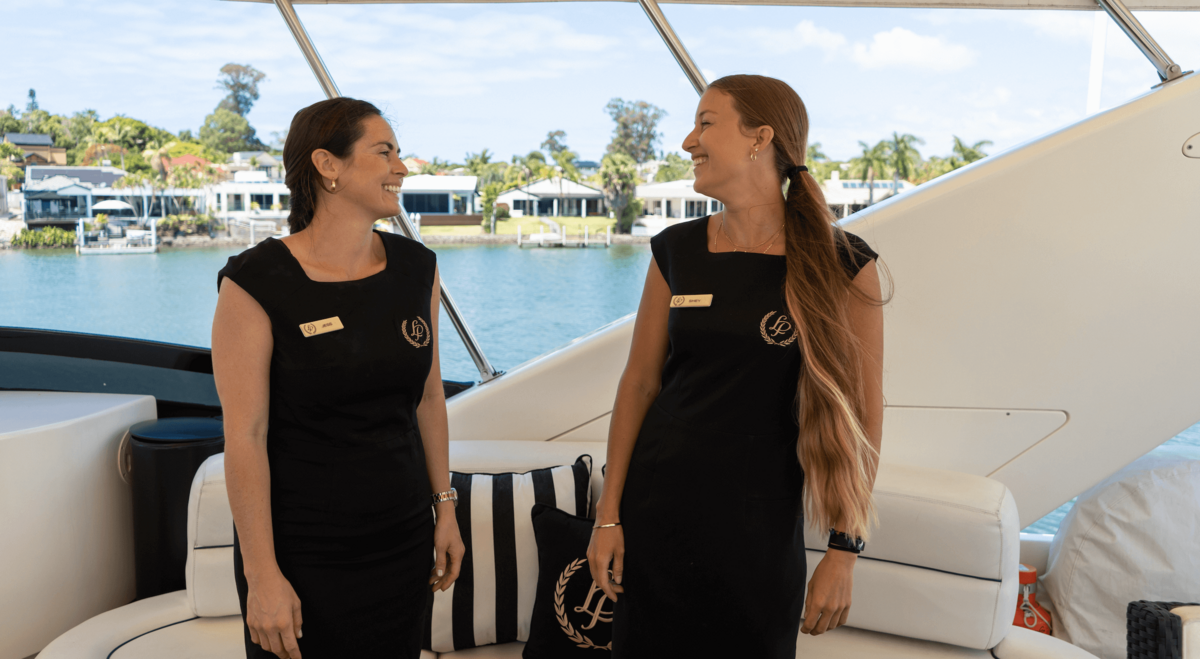
Training Course
But you lack the confidence in your stew skills (after all they are so specialised), and you want to make yourself more desirable for the job hunt! You want to impress your chief stew and have been practicing all the napkin and toilet paper folds you can find.. But the reality is, your stew skills aren’t up to scratch and you’re feeling under prepared to embark on this new yachting journey!
You truly believe in what you have to offer, and you know that you are going to make an amazing yacht stew...
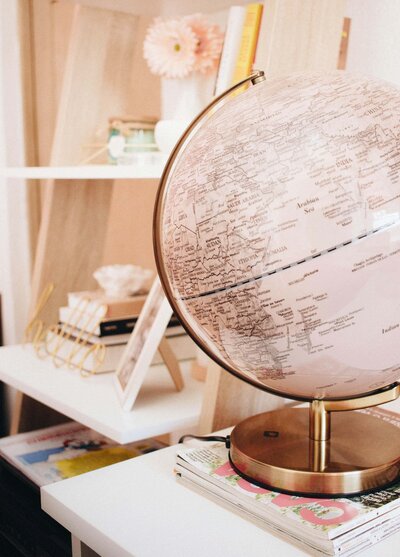
The self doubts kicking and you know you can't keep up the fake it till you make it facade when stepping into a stew role onboard
You’re not feeling as prepared as you would like when it comes to starting out in the yachting world
You’re still left wondering how to do all the stew things the right way to impress your chief stew
You want to be the most desirable candidate for the job yet still unsure what you need to learn
You’ve started getting closer to your dream of becoming a yacht stewardess BUT....
Let me guess..
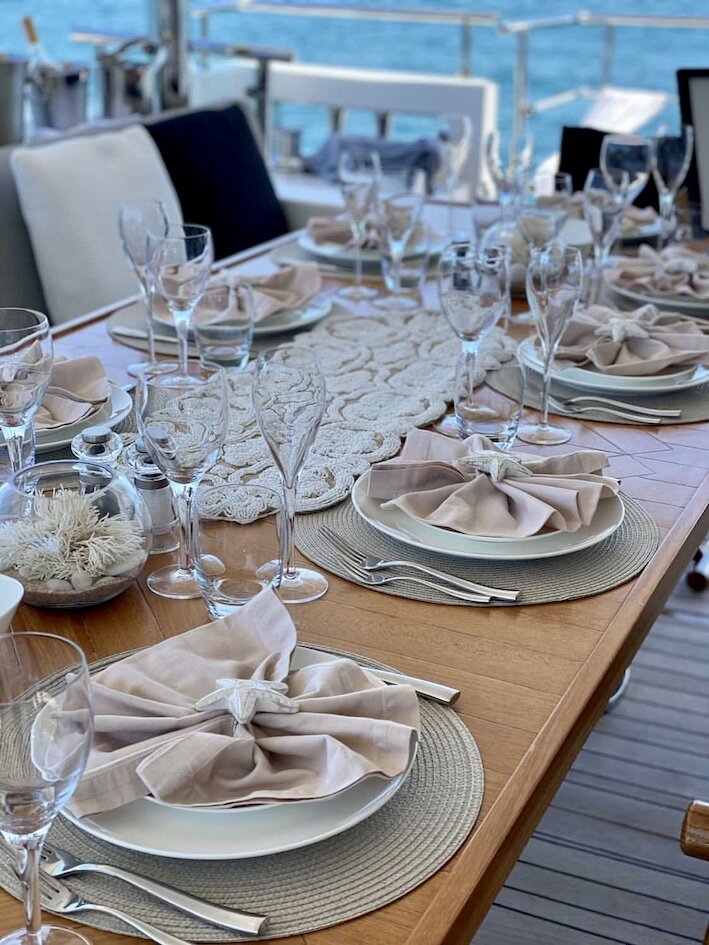
Girl...here's The thing. You're not alone. I've been exactly where you are and I can tell you from chief stew to junior stew it doesn’t have to be this way.
Achieve your dream stew job faster with the right training and tools on hand Have FIVE STAR feedback from your chief stew (Hello amazing CV) Make a good name for yourself as once you’re in the industry, your reputation is your resume! Have the confidence to start a new stew job and tackle all the yachting industry throws at you. You got this!
Let's get you ready for your new dream stew job. Throw in the bowlines because you can:
I'm talking about learning the interior skills that usually take years to master (and mistakes made along the way). because you deserve an experience that allows you to start your yachting career on the right foot. one where you can climb the ladder faster than you can open a bottle of dom pérignon for the guests. it's possible, hold tight, as i’ve got the secrets (and the tools) to unlocking your stew potential.

Wondering how you can achieve these game changing outcomes? I thought you’d never ask...
Word on the street is if you're ready to start your new stew career with confidence then I'm here to show you how. Inside this training course you'll FIND:
Learn how to be a professional yacht stewardess with video training, downloadable checklists and tools to help you as a junior stew. This course teaches the need to know practical side to working in the interior on a yacht from housekeeping, cleaning, laundry and service to table settings, food and beverage, flower care and more!
Training course.
From how to keep the orchids alive onboard to housekeeping and cleaning tips to save you time, organising a guests wardrobe, laundry hacks, table setting, service cheat sheets + more!
INDUSTRY SECRETS
Learn the practical side to service training, housekeeping, turn up and turn down service, bed making, ironing, correct ways of cleaning and products to use, barista coffee making, wine service and more!
VIDEO TRAINING
This course will ensure you are ready for a yacht stewardess role, with 10 tailored interior modules taught by a chief stew with 6+ years experience. It will give you the skills + the professional know-how so you stand out on the CV pile .
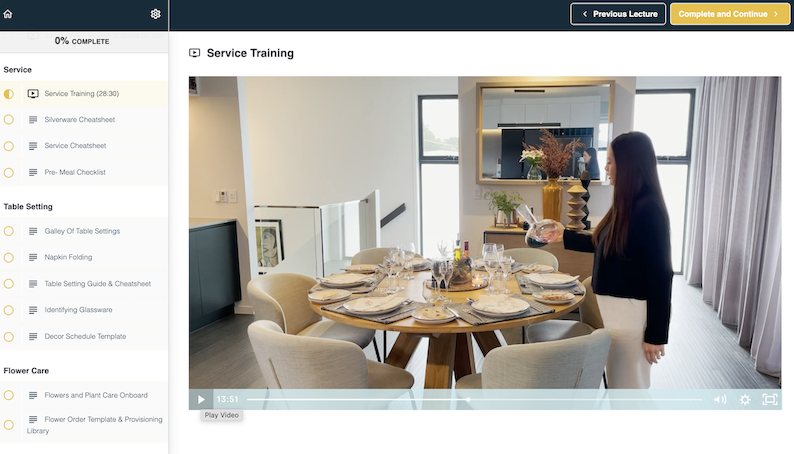
That's not all, when you join the program you'll also receive these bonuses:
The different service roles onboard Setting your mise-en-place Correct Sequence of Service Learn the four main types of service -Silver service, plated, synchronised and buffet as well other styles used onboard. Silverware cheatsheet to remember all the items BONUS: Pre-meal checklist
Managing Crew and Guest laundry Laundry products used and correct amounts to add in Tips to improve laundry efficiency Daily checklist How to clean laundry machines Superyacht laundry care and stain treating guide How to correctly iron (Linen, Guest Clothes, Uniforms) and use the machines from the roller to steam iron to other machines used onboard
Cleaning tips to improve your efficiency Using the correct products on surfaces What goes in a cleaning caddy Hoover parts and cleaning guide Looking after luxury materials Correct treatment of silverware onboard from industry experts- Langfords
Video training Housekeeping Manual Guest Turn up and Turn down Detailing Guide Bed Making Tutorial Guest Luggage (Unpacking and Packing) Wardrobe Management Performing maintenance duties onboard How to stow a boat correctly
Housekeeping
Gallery for inspiration Napkin folding guide Table setting guide The correct glassware to use Table Decor Schedule to organise your daily themes
Table Setting
How to care for flowers and plants onboard Provisioning library Flower ordering template
Flower Care
Barista coffee video tutorial Tea Types and brew Guide Learn all about wine and how to correctly serve it Cocktail Recipes + garnishes Bar set up checklist
Food & Beverage
Certificate upon completion of the course, for a full outline of the course curriculum click here.

valued at $220
The easiest provisioning template you’ll ever use to keep the boat organised. Can be used for food & beverage, toiletries, cleaning products, laundry products, stationery and more! Adjust it to suit your boat, enter your ideal quantity to have onboard and it will calculate how much to order and when items are soon to go out of date.
The best provisioning template in the industry

valued at $190
You will learn the tips and tricks that only come from years of experience in maintaining a superyacht to five star luxury standards. As well as access the full list of cleaning products used onboard and what surfaces they can and can't be used on.
Masterclass: Chief Stew cleaning essentials
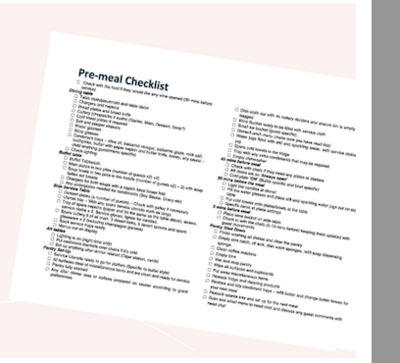
valued at $120
You don’t have to remember it all with this tick as you go checklist. From setting up your mise-en-place to everything that needs to be on the table, how a pantry needs to be pre-service and timer check ins- what's required 45 mins, 30mins and 5 minutes before a service.
PRE-MEAL CHECKLIST- AKA SERVICE LIFESAVER

valued at $130
Direct access to the international crew agencies database filled with over 50 agencies address, phone, website, email and job boards. Sending your CV out for jobs has NEVER been easier.
Worldwide list of Yacht Crew Agencies
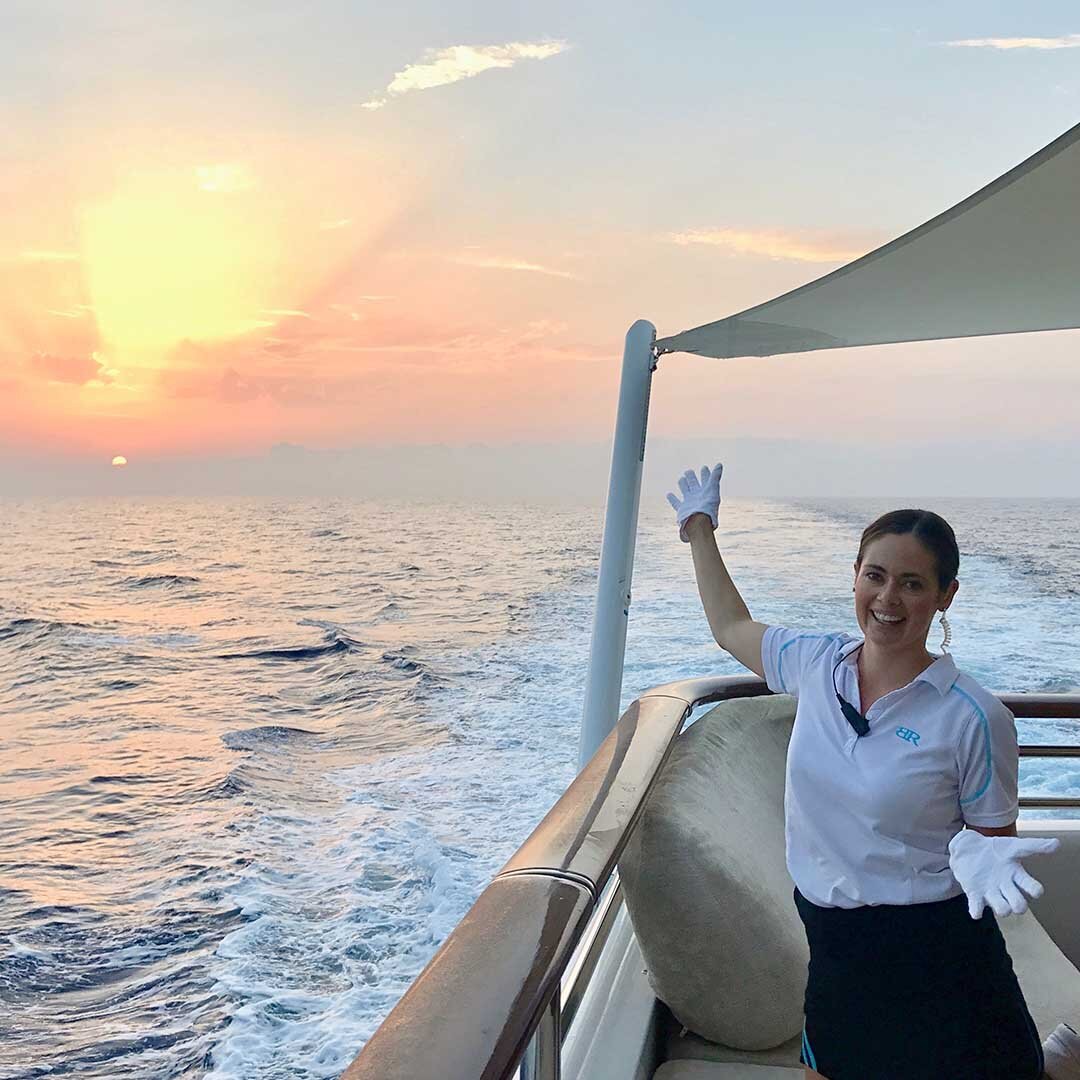
Includes The Seaworthy Yacht Stew Training, The Yachting Kickstarter Guide and CV Toolkit
3 course bundle
Limited offer
Save when you pay in full. Payment plan available contact [email protected]
One-time payment of
So, are you ready to stop dreaming and start doing .
Usually $655
I help aspiring yachties (just like you) confidently break into the industry by teaching what is required to prepare for a career as yacht stewardess, the proven steps to successfully land your first job, AND how to survive and thrive in this unique industry. My passion for helping junior crew is fuelled by the belief there is a world of possibility out there if you're willing to chase it. My courses are based on practical knowledge and tools which will help you succeed in your new dream role. Yachting is the best career move I ever made and now I get to SHARE all my knowledge with junior crew on how to break into this incredible industry with confidence. I hope to be able to support you along your yachting journey.
An Australian Chief Stewardess with six years experience in the Superyacht industry.
Hey, i'm jess. , meet the face behind the seaworthy stew .

PROUD MEMBER OF
Featured in:.

There are so many possibilities waiting for you. I can't wait to share with you the tools and knowledge that helped me have a very successful career in yachting! All you gotta do is join me inside The Seaworthy Yacht Stewardess Training Course. See you in there?
Imagine: Having NO more doubts The confidence to succeed BEING GUIDED BY A CHIEF STEW AND HAVING THE SUPPORT BEHInD YOU ALL THE WAY New skills for your CV
I'll be your biggest cheerleader...
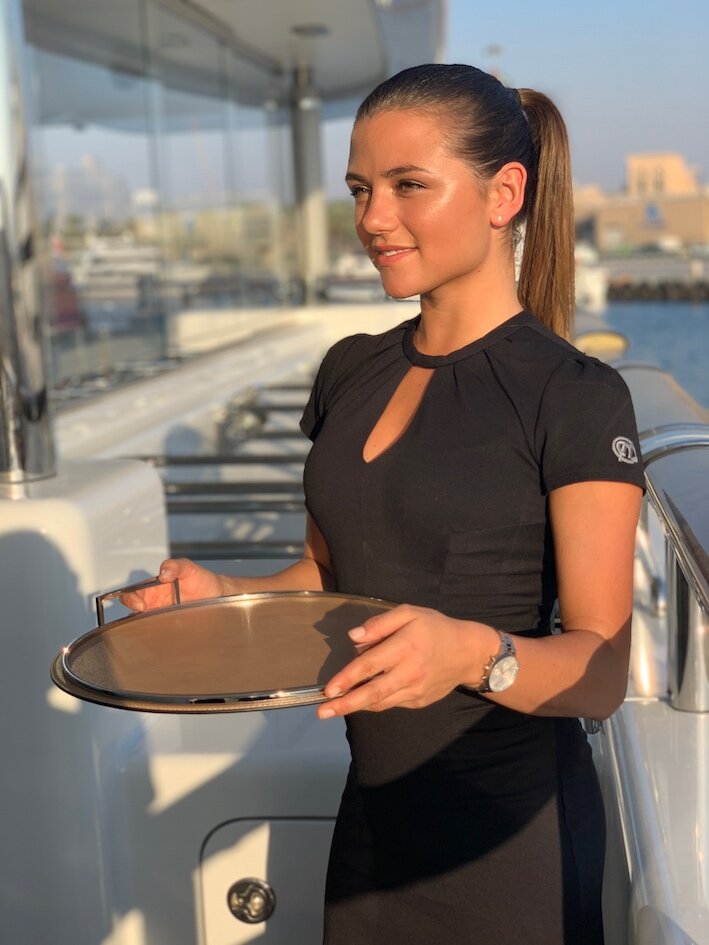
Includes practical modules, checklists and cheat sheets to make life onboard so much easier
VIDEO MODULES TO REFER BACK TO WHEN YOU NEED
Made by a Chief stew for junior stews
100% remote learning (take it at your own pace), say goodbye to trying to lock in course dates that don't fit your schedule
Don't pay thousands of dollars for training that leaves you still feeling lost. Here are some of the ways THE SEAWORTHY STEW SCHOOL is different:
The Seaworthy Yacht Stewardess course is like no other. Based 100% online, with practical skills and theory to help you build your skills for your dream career.

Ask Jess Anything!
Yes, you will receive a certificate with the date to show when you completed The Seaworthy Stew Yacht Stewardess Course.
WILL I GET A CERTIFICATE AFTER I COMPLETE THE STEWARDESS COURSE?
It depends how much experience you have in all departments (Housekeeping, laundry & Service). If you have been in the industry less than 6 months this course would be very useful for you. OR if you are a SOLE STEW and need guidance and tools to help you run the interior as efficiently as possible.
DO I NEED THIS COURSE IF I AM AN EXPERIENCED STEW?
Currently there is no qualification, instead when you complete this course you gain a certificate of completion from The Seaworthy Stew School which can be used for supporting documents and on your CV. We are working on the accreditation process as a part of the G.U.E.S.T Program.
DO I GET A QUALIFICATION AFTER I FINISH THE COURSE THAT I CAN ADD TO MY CV?
With 10 Interior modules there is A LOT of information to access, I recommend breaking it down into bite sized chunks and go through the modules when you can. The content is designed so you can refer back to and use the checklists and cheat sheets when needed throughout your stew career.
HOW LONG DOES THE TRAINING TAKE?

You are already in a great stew position onboard and have years of experience under your belt. You don't like checklists, manuals, cheat sheets and practical training. All these things are totally essential to all things stewardessing! You are wanting to pursue a role of a deckhand or engineer onboard. The job role is very different to being a stewardess.
This program is for aspiring and junior stews. It's not right for you if:
to fast-track her career, leading to better boats with bigger pay cheques.
ready for all the industry throws at her. and willing to take action.
a junior stew who is looking to start her dream stew career with confidence.
This program is right for you if you're ready to stop dreaming and start doing. You're in the right place if you are:
What other's say about the course....
Chanel Hobbis
I’ve been in the industry for over a year now and found your junior stew course so helpful, enriching and informative. The information, videos, and the guides are amazing and I would highly recommend the course to anyone wanting to further their knowledge in yachting! It’s an amazing stew course! So glad I completed it, I now feel so much more confident and I have learnt a lot of new tricks! Thank you Jess.

JUNIOR YACHT STEWARDESS
Elle Westhoff
I’m soooo impressed with the Seaworthy stews new junior stew course! Jess has covered absolutely everything you need to know in order to kickstart your career as a stewardess in the yachting industry. I wish there were something like this out there when I started off and can not recommend it enough! From video training and downloads that are super helpful when starting out. This course has all the fundamentals of being the best stew you can be including housekeeping, laundry and service in major detail! If you are looking into taking the leap of faith of starting your dream career as a superyacht stewardess. Look no more because Jess has you covered!

FROM A CHIEF STEW WITH OVER 6+ YEARS EXPERIENCE
Sophie, UK
Wow, just finished The Seaworthy Yacht Stew Course and I just want to say thank you for putting it together. I absolutely loved learning about all the topics and will be going over each part, again and again, the go-to guides are such a valuable resource. This is stuff I really wanted to know about, I’ve taken so much from this course. Absolutely brilliant and worth every penny!

WORTH EVERY PENNY!
Jess's course covers all the things I wish I knew when first starting my yachting career. As a chief stew for 5 years now I can say combining all these foundational skills with the added support and downloads is one priceless resource to help junior stews really understand what to do and how to do it well and I would highly consider hiring someone who has been through The Seaworthy Yacht Stew Course! I've personally worked with Jess and she knows her stuff! It’s fresh, modern and everything you need to impress, I’ll be looking for this training on cv’s next time I’m trying to find the perfect stew.

"I’ll be looking for this training on cv’s next time I’m trying to find the perfect stew."
This course will ensure you are ready for the yacht stewardess role, with 10 tailored interior modules taught by a chief stew with 6 years experience. It will give you the skills + the professional know-how so you stand out on the CV pile . The Seaworthy Yacht Stewardess Course is designed to set you on your pathway as a professional yacht Stewardess and will make you a desirable candidate for the job.
Let's get you job ready! Learn everything you need to step into your new stew role with confidence.
So what are you waiting for.

Limited Offer
Save when you pay in full. Payment plan available contact [email protected]
(Usually $655)

Got questions? Let's chat!

© 2020 THE SEAWORTHY STEW
Impartial training and careers advice
Call us: +441983 280 641
+441983 280 641
- Begin a career on a Superyacht
- Career paths
- Become a Steward/ess on a Superyacht
Become a Steward or Stewardess on a Superyacht.
A perfect way to combine work and travel – and you’ll get to spend your time in the sunshine and in some of the most beautiful places in the world.
The Superyacht industry is constantly on the lookout for energetic, hardworking people, male or female, to provide guests and owners with the ultimate holiday experience.
Read on to discover answers to some of the most common questions we’re asked about being a Stewardess on a superyacht…
What qualifications do I need to work on a Superyacht?
- ENG1 medical required by all crew who work at sea. If you are thinking of becoming a Superyacht Steward/ess, then we recommend you complete the ENG1 medical before completing Step 2.
- STCW Basic Safety Training Course is a set of compulsory qualifications required by all crew who work at sea. You will complete a Sea Survival course, First Aid, Fire Fighting (great fun), and topics on Health and Safety, and Security.
- Get some experience . If you have hospitality experience or you have worked as a Nanny, Beautician, Hairdresser or Air Steward/ess, to name a few, then this will look great on your CV.
How do I get a job on a yacht with no experience?
It’s true that you don’t have to have worked on a yacht to start your career as a Steward/ess (apart from the compulsory qualifications mentioned above!).
Like any new career, though, it is a good idea to get some training in the basics so you can hold your own onboard. All yachts run slightly differently so one size does not fit all. To increase your chances of finding a job the more experience you can get the better.
The more experience you can offer the yacht, the better. So, if you don’t have any transferable skills, then Flying Fish can help .
How do I find work on a Superyacht?
There are three ways crew find a job.
- Most crew travel to Antibes, France described as the hub of yachting in the Mediterranean.
- Online, we talk a bit more about “going online” below.
- Contacts. If you know somebody that is already working on a Superyacht then through their connections it is possible to find work.
Almost everybody that is looking for a job on a Superyacht travels to Antibes, France. On arrival, crew tend to stay in a crew house such as the Crew Grapevine used as a base to look for work.
If budget is a concern then crew join forces and rent an Airbnb between them. The advantage of a crew house like the Crew Grapevine is that the owners (ex-yachties) actively help you find a job.
The way you find a job on a Superyacht is quite unique. From your base in Antibes, you would travel to other ports in the local area, walk the dock and chat to the crew working onboard to see if there are any positions available.
Superyacht crew who have the evening off will go to the local bars to unwind. This is the perfect chance to get to know people that are working on Superyachts and to build connections in the industry.
Learn more about it here
Go online to look for work
All Superyacht recruitment agents post positions on their respective websites. Once qualified, new crew would register with the agency and complete their registration form. You would then get in touch with the agent to start searching for that dream job.
The recruitment agent’s job is to match the right candidate for the job being advertised. There are many recruitments agents out there, a quick Google search for “ Superyacht Recruitment Agents ” will bring up a list.
Facebook is another medium that yachts use to post jobs. To keep up to date is it worth joining a couple of the Superyacht Facebook groups. Yacht crew jobs and Palma yacht group are two examples.
Amelia, who trained with Flying Fish in 2020, gave some good advice:
“Sign up to a few good recruitment companies, make sure you interview with the recruiter first rather than using Facebook. Second, when you have your interview, make sure you ask questions about the yacht. This is because you are not only finding a job but a home and family too, so ask as many questions as possible to make sure it’s the right yacht for you.”
How long does it take to find work as a Steward/ess on a Superyacht?
Over the 12 years that we have been running Steward and Stewardess courses, most find a job between one to four weeks. We have had customers that have found a job in a day and others that have taken six weeks to find that perfect job.
The time it takes to find a job is down to you. You will need to be proactive, up early, and make sure you are at the front of the queue. From our experience, people who work hard and explore every opportunity will find a job quickly.
Every Chief Stew that calls us for a reference asks the same questions – does the candidate have a good attitude ? You need to be hard-working, happy to work long hours, and used to mucking in. Have a can-do attitude and a willingness to go that extra mile to help your fellow crew mates.
When’s the best time to look Steward/ess Superyacht work?
Traditionally Superyachts recruit for the Mediterranean season anytime between February to May. That being said, yachts recruit all year round. We have seen many graduates find work in July and August when the season is in full swing.
The next key recruitment period is between September and November as yachts prepare for the Caribbean season. Yachts will cross the Atlantic anytime between December and January to cruise the Caribbean or the US for the winter.
Superyacht crew who have had a busy Mediterranean season may decide to take the winter off, which leaves opportunities for new crew to enter the industry.
How much money does a Steward/ess typically make?
A Steward/ess starting out in the industry can expect to earn €2,000 to €3,500 per month – almost all crew paid in Euros. The salary can depend on many factors, the main one being the yacht’s “crew budget.”
The owner or management company will agree on a budget that the Captain uses to hire crew, which can lead to small variations in the amount yachts pay their crew.
Your salary can also depend on whether you work on a Charter or Private yacht. It is customary for charter guests to tip the crew, the tip is normally around 10% of the charter fee. Chartering a Superyacht can set you back anywhere from €250,000 to €1 million per week.
Tips are split evenly amongst the crew and on average, can be anything from €2,000 – €5,000 per charter.
Is my salary tax-free?
As a crew member (or Seafarer) working on a Superyacht, it is likely that you will be out of the Uk for a significant about of time. Spend more than half of the year abroad then you fall under a specific piece of legislation called the Seafarers Earning Deduction Scheme. As a basic principle, if you are out of the UK for more than 183 days then there is no income tax on income (including tips) from the yacht.
UK Seafarers are required to complete a self assessment tax return each year. Flying Fish are registered tax agents and offer a Seafarers tax service to the yachting industry. We work with hundreds of customers to insure that their Self Assessment tax returns are completed on time.
What is it like working on a Superyacht?
All Superyacht crew work, eat, and sleep onboard. The yacht will become your home, and all meals are provided while onboard. Your contract will specify your duties, salary, working hours, and holiday. The yacht will supply your uniform and provide further training if necessary.
Superyacht crew will be comfortable with being away from their friends and family for long periods of time. For your first job, expect to be away from home for an extended period, which may be six months or more.
There are various roles within the Interior department; Laundry, Service, and Housekeeping. Depending on the size of the yacht will depend on what your role is onboard. For example, large yachts will have a dedicated laundry team, while for a small yacht (35-40M), the Stewardess will do all three.
During a normal week, when there are no guests onboard, you are likely to work five days a week, with weekends off. The structure of your working week will differ from yacht to yacht, but there will be time off to explore and have some well-earned downtime.
What’s a typical working day like for a Steward/ess?
Your working day will typically start at 8:00 am and finish at 6:00 pm, usually six days a week. When on charter, or if the owners are onboard, your work hours will differ. Unsociable hours are common when guests are onboard.
What are the cabin arrangments ?
You will share a cabin with another Stewardess. The cabins are small but comfortable with an ensuite bathroom. There is access to the internet via that yacht’s Wi-Fi system, so you’ll be able to keep in touch with friends and family at home.
Can I make a career in yachting?
Yes, and many have! Becoming a Superyacht Stewardess can be a career, and what an amazing career it can be. Every Stewardess starts out as a Junior Stew; then, as you gain time and experience onboard you can progress to 2nd Stew, then Chief Stew.
The chief Stew runs the entire interior team, manages the budget, and will be the first point of contact for the guests and owners – not an easy role.
Some yachts will employ a Purser , which can be best described as the PA to the Superyacht.
Not only is there progression, but becoming a Superyacht Steward/ess offers the travel and adventure we all seek. You will meet some of the world’s rich and famous and make some friends for life.
So, how do I become a Steward/ess on a Superyacht?
This is where we come in. Flying Fish run a two-week Superyacht Steward/ess course that includes all the qualifications and skills you need to get started in the industry. Everything from the STCW Basic Safety Training to our specialised Interior programme, run by an ex-chief Stewardess.
The course is great fun; you will learn loads of new skills and meet like-minded people who, like you, are thinking about a different career path.
Superyacht Steward/Stewardess Course
Become a steward or stewardess on a superyacht.
Becoming a Superyacht Steward or Stewardess is the perfect way to combine work and travel.
The course is suitable for complete beginners or those with experience who are looking to work as a Steward or Stewardess on a Superyacht.
Want to find out more?
Contact our team at Flying Fish today for information on our Superyacht Steward/ess course, life as a Stewardess, qualification advice and much more!
Alternatively, click on our Superyacht Steward/ess course below and kick start your new career today!
The ultimate guide to working on Superyachts

IMAGES
COMMENTS
Plus, yacht crew members often get tips from yacht owners and charter guests, which can really add to their income. Here are some key factors that can affect how much a yacht stewardess makes: Position: Chief Stewardess, the person in charge of the inside of the yacht, usually makes more money than the other entry-level stewardesses.
The Yacht Stewardess and Steward Tips group has just consistently grown since 2013, and I believe this is through monitoring it numerous times each day and only allowing content we deem of interest to the members and that they will not find on any of the other hundreds of yachting groups - it is hard work because trolls do pop up anywhere ...
In conclusion, being a successful stewardess requires a combination of technical skills, interpersonal skills, and a deep understanding of the yacht industry. By following these tips and continually developing your skills, you'll be well on your way to building a successful and rewarding career in the yacht industry.
From a Stew to Future Stews, here are 10 things no one tells you before you become a yacht stewardess…. You will laugh until you cry and cry until you laugh somedays as you are challenged physically, mentally and emotionally. Remember to be kind to yourself.. You quickly develop a new love for a hoover (vacuum cleaner) learn to drive ...
If possible, go ahead and schedule your personal interview. (Chapters 9 and 10) Book that airplane ticket, and move to a hiring port. (Chapter 8) Once you are physically in a hiring port, go meet with the agencies. I recommend registering with a minimum of two crew recruitment agencies to get started.
In fact, over the past 10+ years as a Yacht Stewardess Mentor, this is one of the most common problems I have seen among Chief Stewardesses and HOD. If you're feeling less productive these days and wondering how to deal with and what can help, keep reading below to learn my Top 10 Time Management Hacks for Yacht Stews. 1.
Never scrub or put any stain remover on spilt red wine. Blot as much as possible with a WHITE paper towel (no dyes), then add some club soda - or cold water - to dilute the stain. Keep stain wet and keep blotting, never scrub. When the paper is coming up clean, lay a stack of kitchen towel over the area and pile heavy books on top.
All crew need STCW basic safety training, a five-day course, and an ENG1 medical certificate, and some yachts may also require certification in Food Safety & Hygiene, a one-day course. On top of these necessities, there are numerous options for yacht-specific interior training, but many chief stews, like Robert, prefer to teach on the job ...
The Seaworthy Stew. Your First Service Role As A Stewardess: The Breakfast Shift. 30. 00:00:00 / 00:27:45. 30. Learn all about service as a yacht stewardess with The Seaworthy Yacht Stew Online Training Course. Includes video training, service styles, service cheatsheet, pre-meal checklist, table setting, glassware guide and more!
Tips & Insights for Stews! Type keywords to search the YM Stew Blog (e.g., table setting, inventories, chief stew duties) Inspiration + Tips for the yacht stewardesses
Yacht stewardess salaries vary depending on several factors, such as the size and type of the yacht, level of experience, expertise, and the region. Salaries can range from $1800 - $ 3000 per month as a junior Steward/ess. Additionally, many yacht steward/esses receive tips from satisfied guests, which can significantly increase their earnings.
4. First Aid / CPR (Basic First Aid) 5. Proficiency in Security Awareness (PSA) It is impossible to get a job on a yacht unless you have this. The course can cost anywhere from $800 - $1500 depending on where you do it. This might seem like a lot of money, but you will make it back so fast once you get your first job.
3.6 Craft Your Yacht Stewardess CV. When applying for yacht stewardess positions, it's crucial to have an impressive CV that stands out from the competition. A yacht stewardess CV should showcase your skills, experience, and personality. Make it visually appealing by incorporating color and an attractive layout.
The annual salary for a yacht stewardess starts at around $40,000 plus tips. While that may not seem like a lot to some, while you are living on the ship all of your expenses will be covered by the charter guest. ... Being a yacht stewardess is a great way to see the world, meet incredible people, be fed every meal by a great chef, and live a ...
Yacht Stewardess - Setting the Table . 9 Tips from a Chief Stewardess. To get a Yacht job you need first to know the basics of setting the table, discuss with the chef what will be served, know how much time the chef needs to prepare each dish. This way the guests are left waiting around. Be confident in what you are serving as you will need to prepare the correct utensils for the dish and ...
How to be a professional yacht stewardess. Let's dive deep into learning more about the practical skills required to be a stewardess, equipping you with the need to know skills that will help you confidently step into your new role and have the best tips and tricks up your sleeve to WOW your new chief stew. Preparation is key to getting a job ...
Compensation for chief stews runs anywhere from $3,450 to $5,650 a month on smaller yachts (80 to 140 feet) to $5,200 to $8,000 a month on yachts over 140 feet. It is very common now to see $65K and $70K salaries, or even $90K+ on the much larger vessels. Salaries for entry-level yacht stewardesses start out between $30K-$43K a year, or ...
The general base pay for a yacht stewardess is $2,500 a month with higher wages for higher positions (like senior stewardesses and chief stews) and higher ships. Stewardesses on yachts larger than 55 meters can make well over $4,000 a month. And that doesn't include tips!
Listen now- Check out The Seaworthy Stew Podcast here. The Seaworthy Stew. Yachting as a Sole Stewardess. 30. 00:00:00 / 00:28:20. 30. Ever wondered what life is like on board as a sole yacht stew? In this blog/podcast episode, I dive into a day in the life of a sole stew. What jobs you'll be doing from service, housekeeping, and laundry- you ...
1.2 the benefits of being a yacht stewardess. 1.2.1 how much does a yacht stewardess make; 2 2. pack up your belongings; 3 3. quit your job; 4 4. arrive at a yachting hub; 5 5. find a training school to do your courses. 5.1 what does the stcw 95 and pdsd involve? 6 6. complete your eng1; 7 7. write a yacht stewardess cv. 7.1 how to make your cv ...
About this group. This group was started in July 2013 for all yachting Stewards and Stewardesses. Handy Housekeeping, Wine, Cocktails, Cleaning products, Table Setting, Service, Health, Laundry and other useful tips for Yacht Steward/esses. Feel free to share your winning ideas or ask for advice, we can all help each other!
From how to keep the orchids alive onboard to housekeeping and cleaning tips to save you time, organising a guests wardrobe, laundry hacks, table setting, service cheat sheets + more! INDUSTRY SECRETS. ... This course will ensure you are ready for the yacht stewardess role, with 10 tailored interior modules taught by a chief stew with 6 years ...
Tips are split evenly amongst the crew and on average, can be anything from €2,000 - €5,000 per charter. ... For example, large yachts will have a dedicated laundry team, while for a small yacht (35-40M), the Stewardess will do all three. During a normal week, when there are no guests onboard, you are likely to work five days a week, with ...